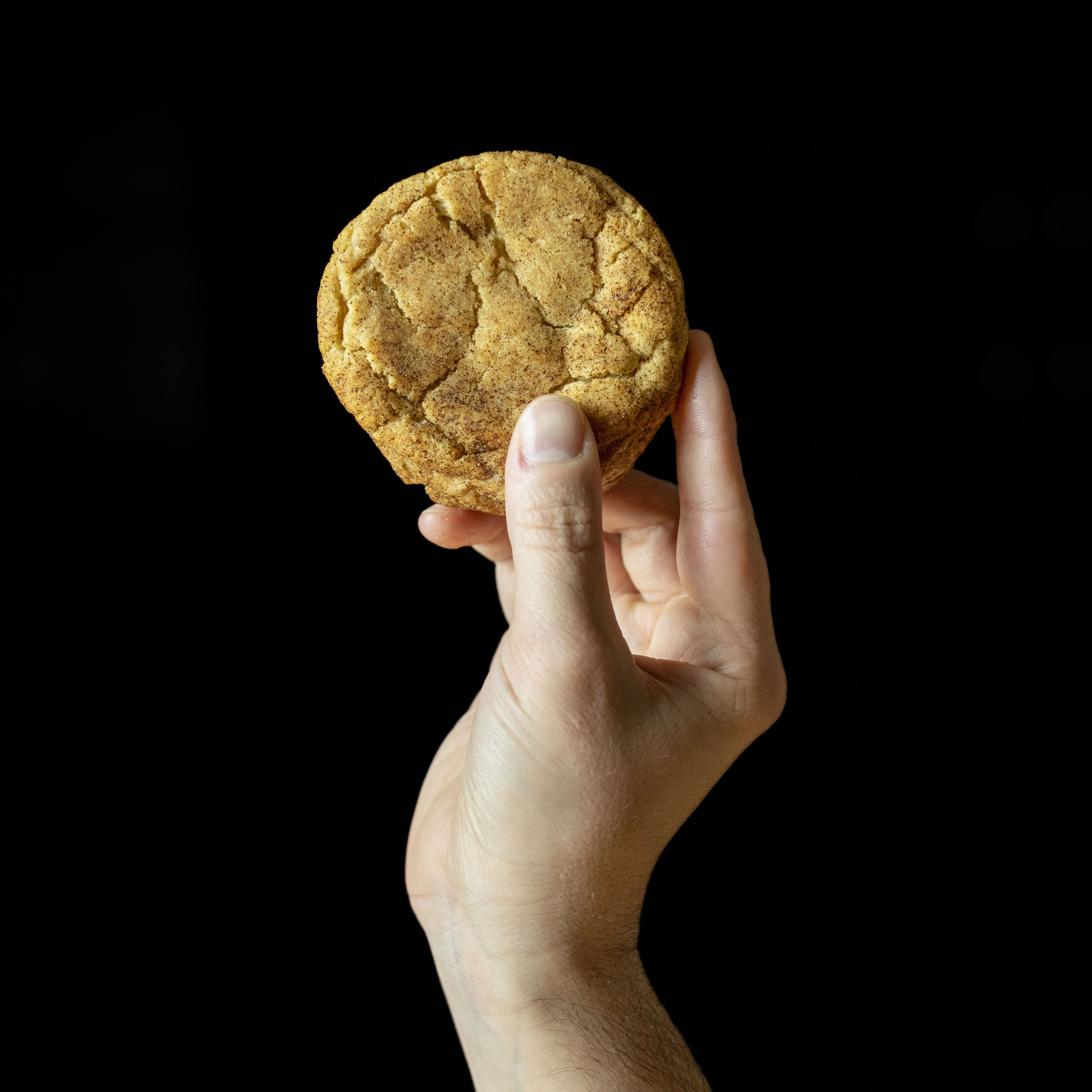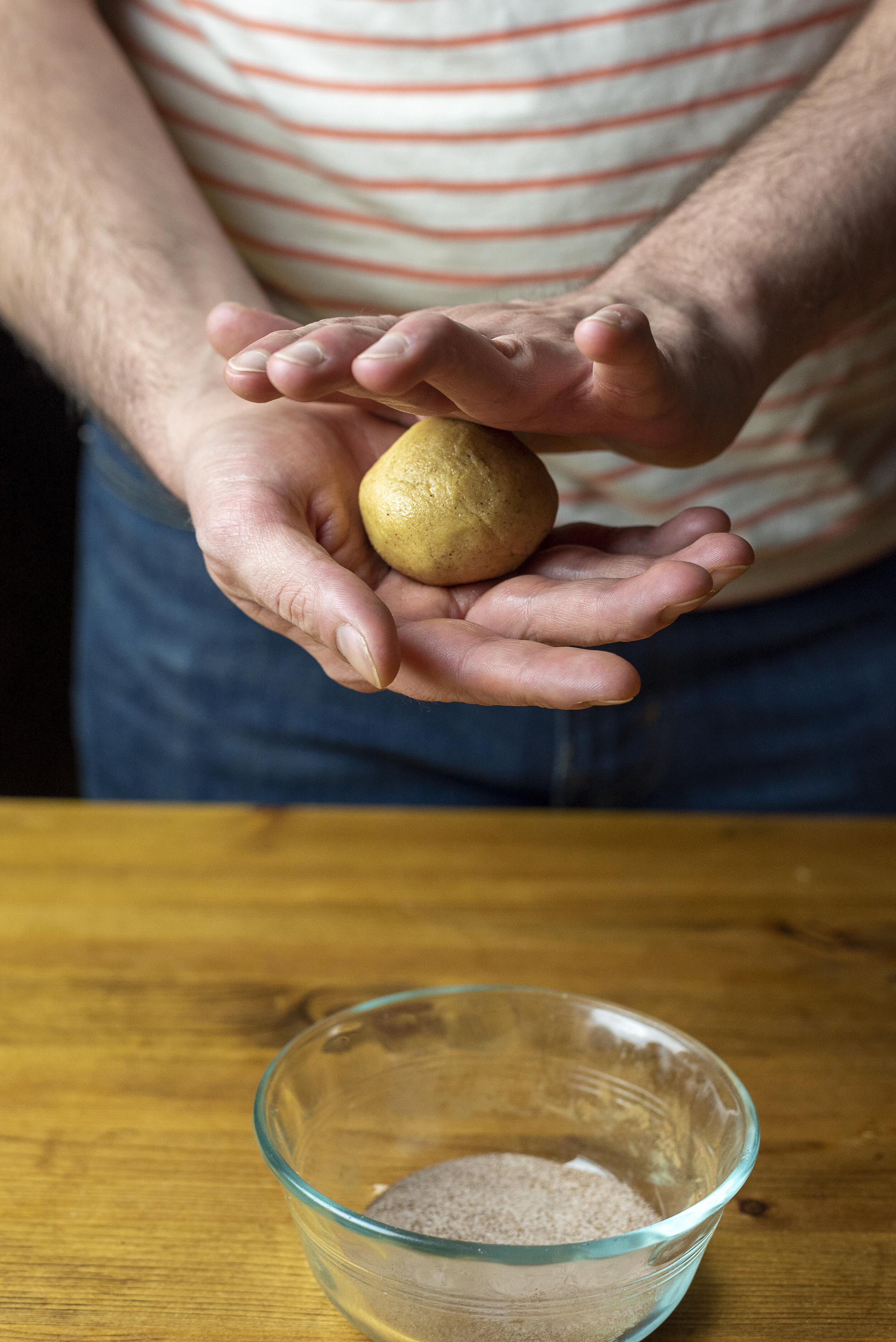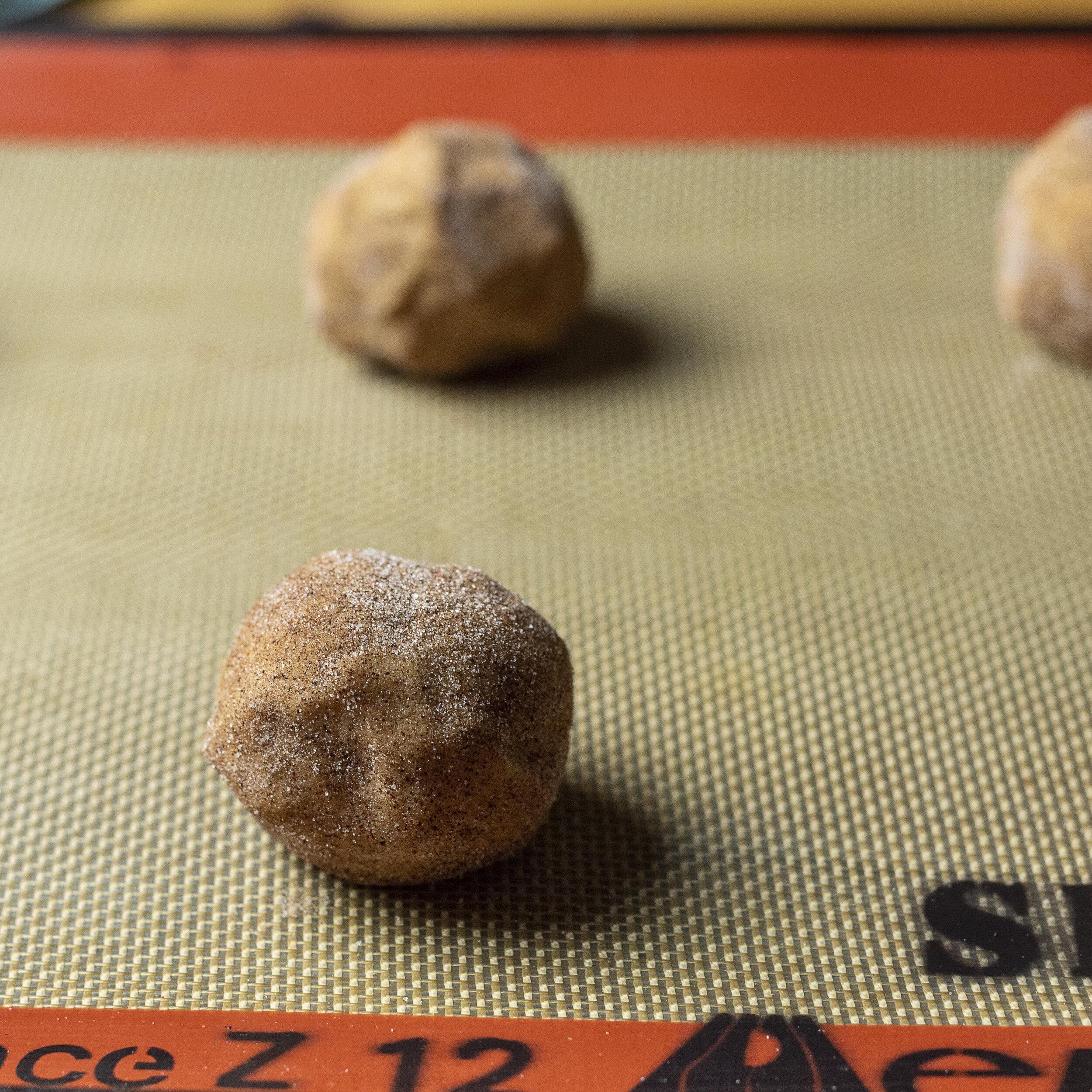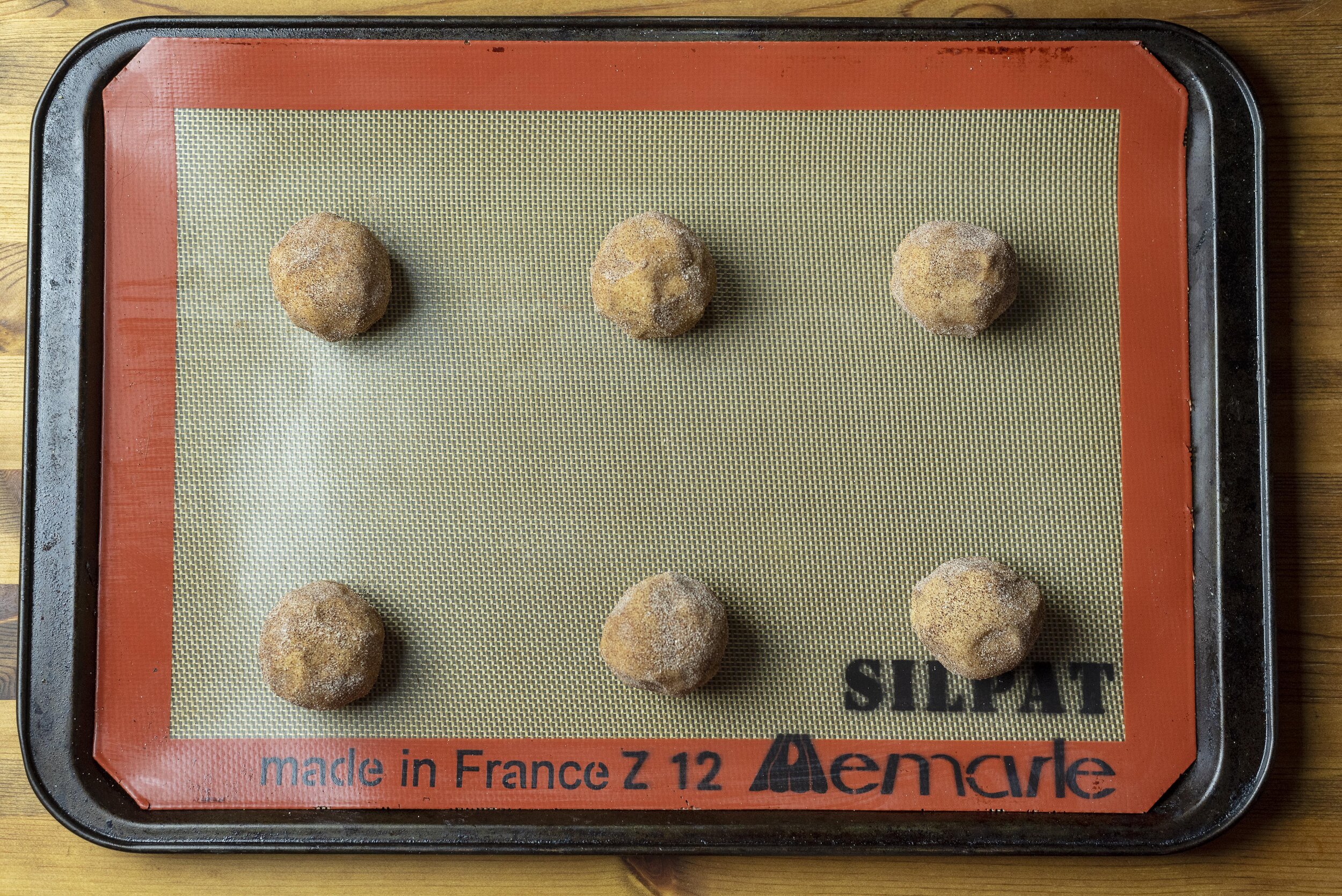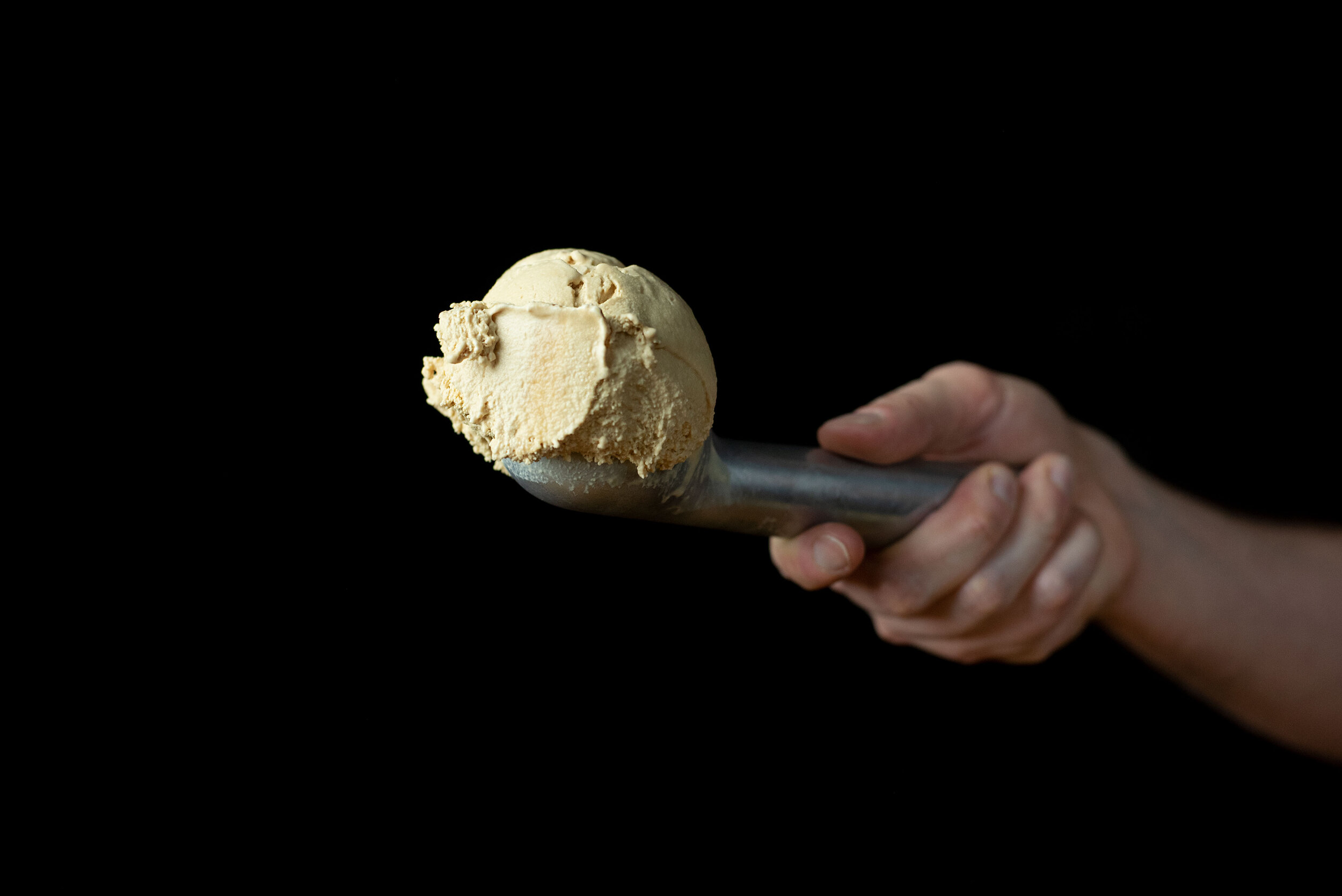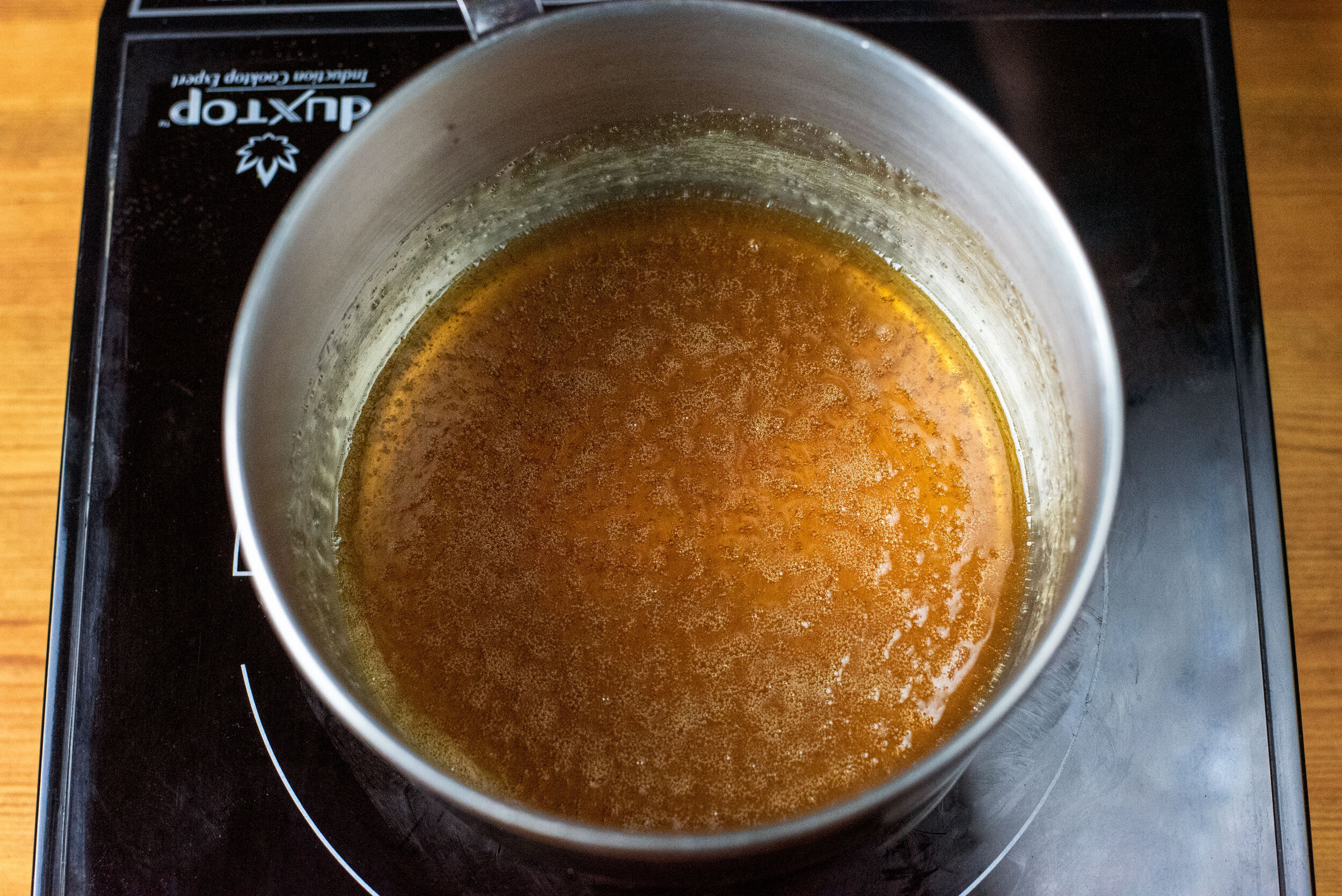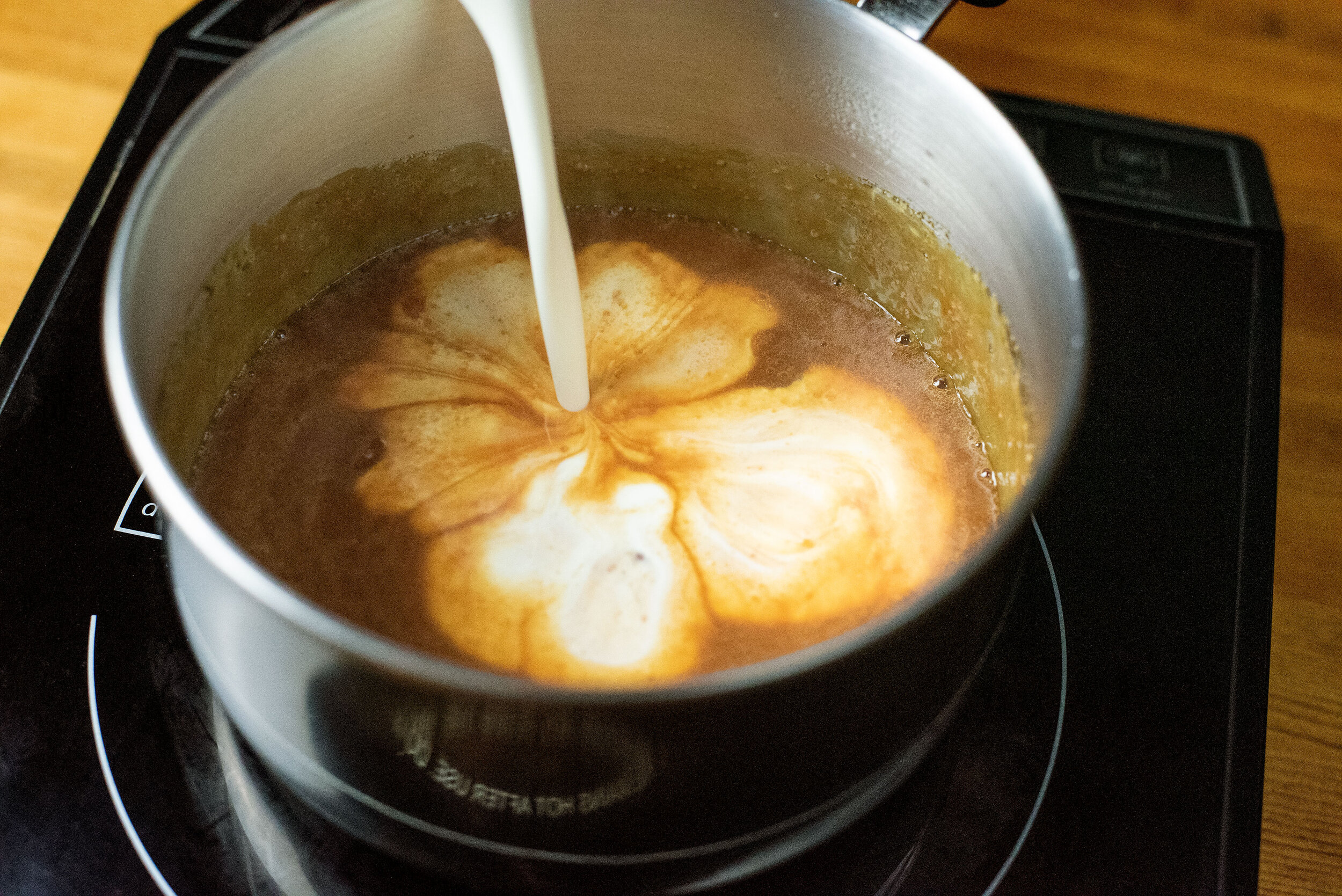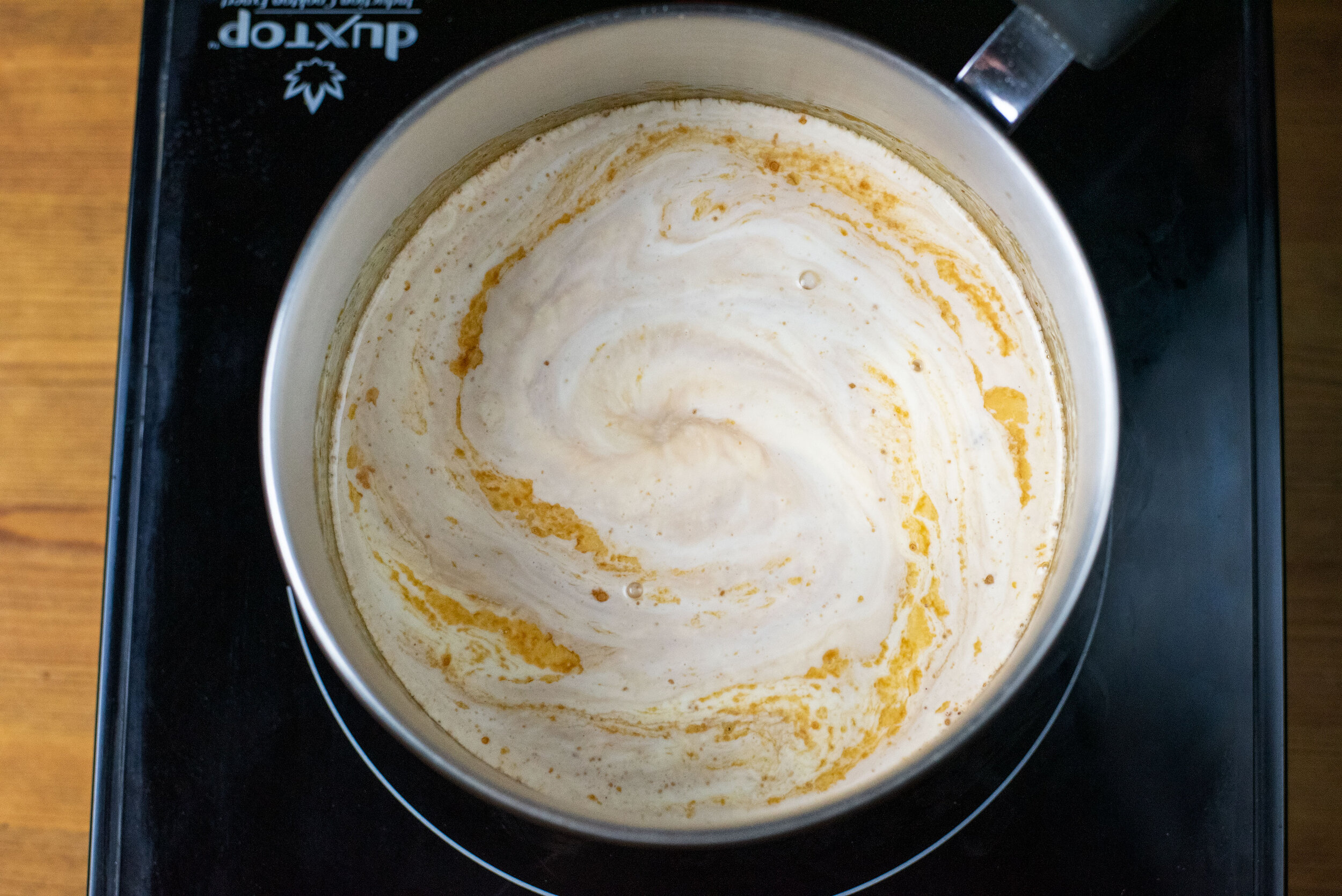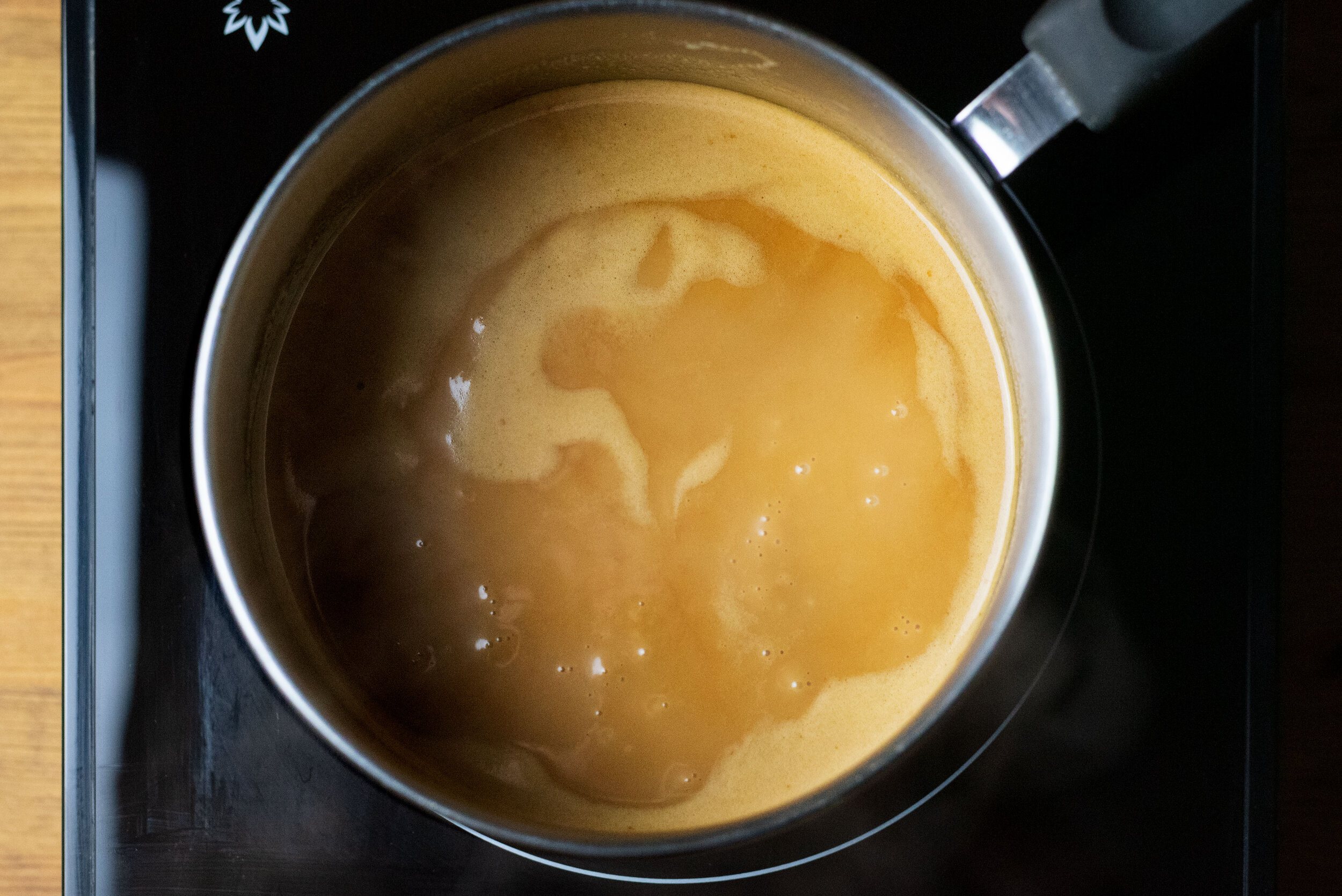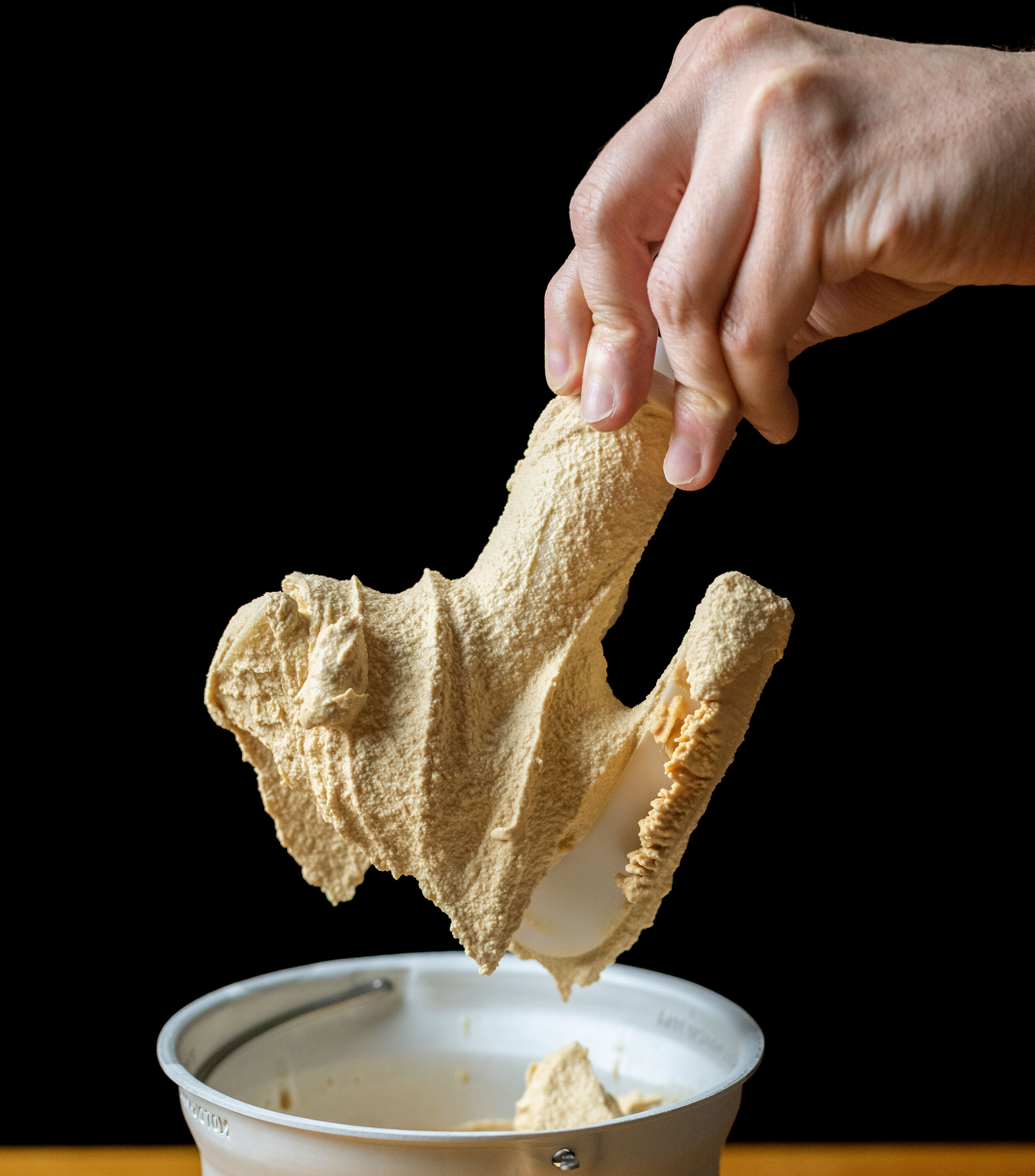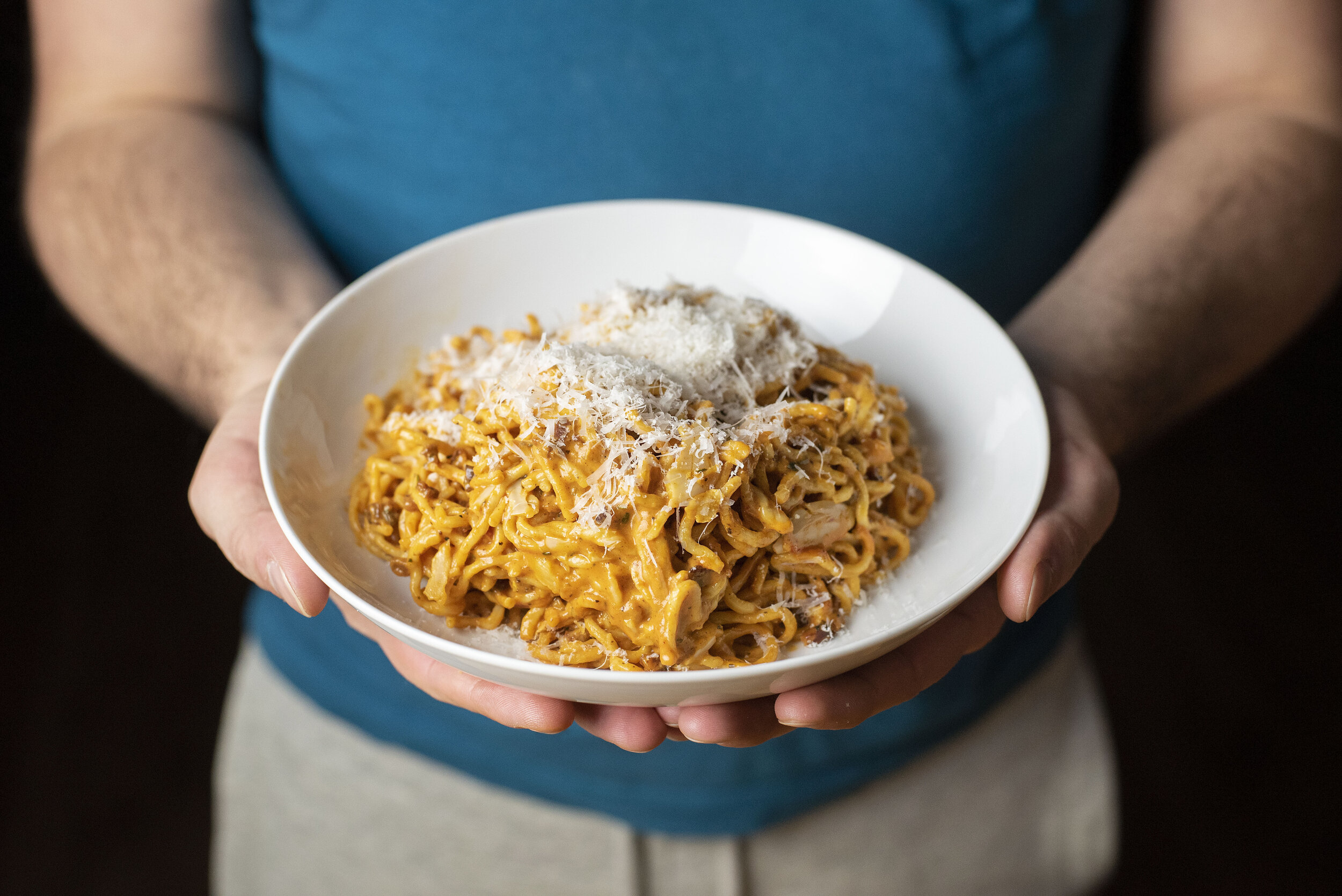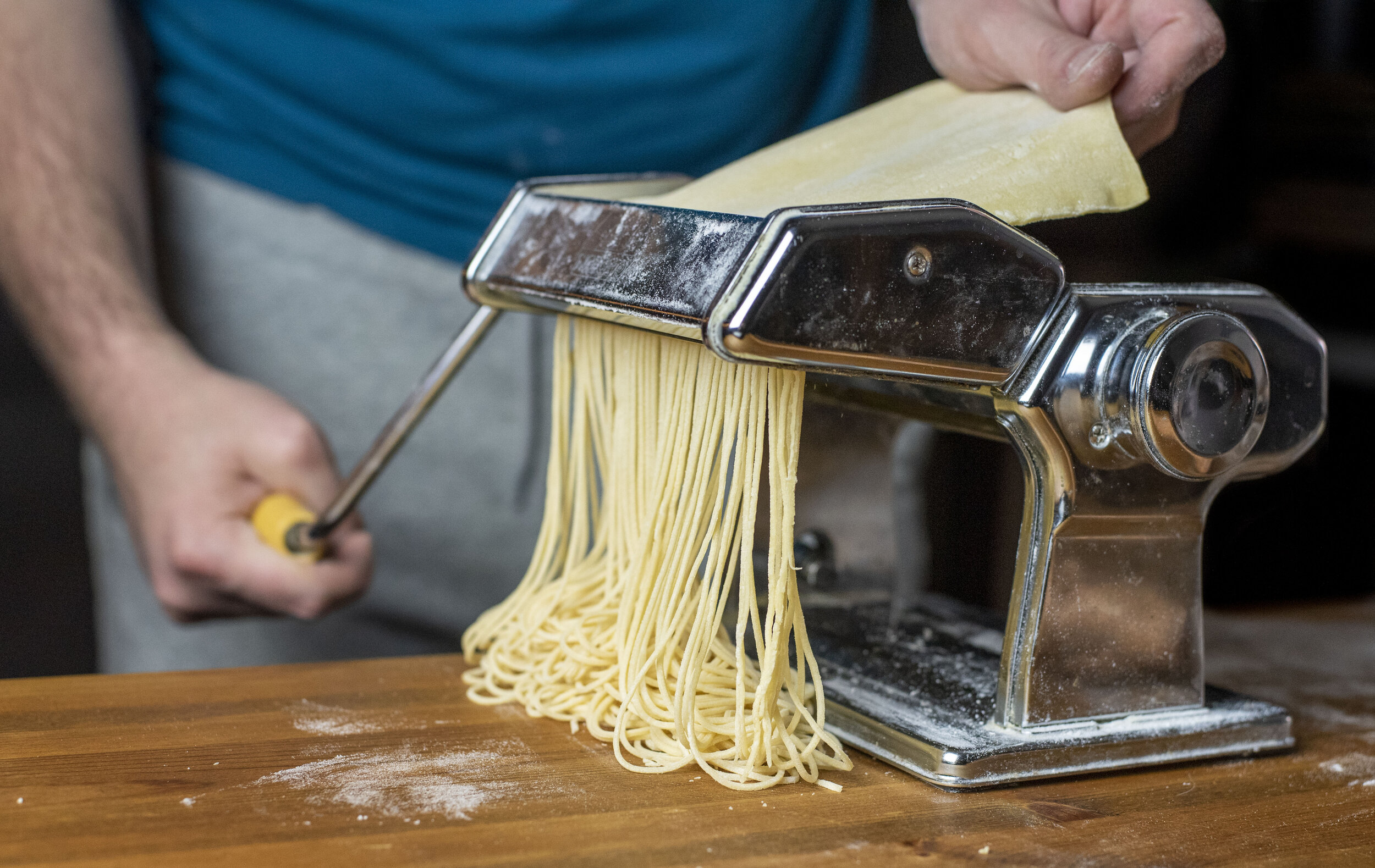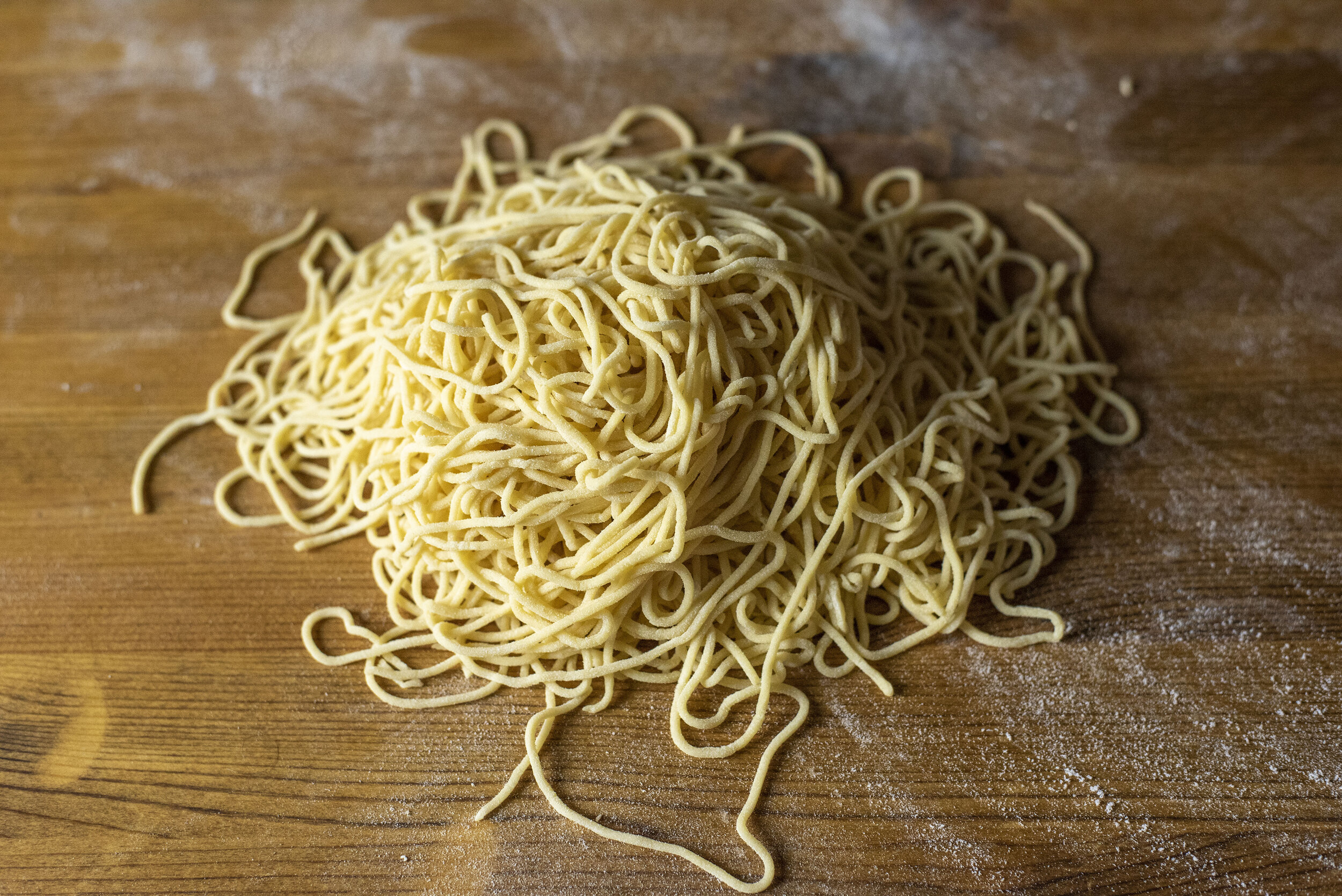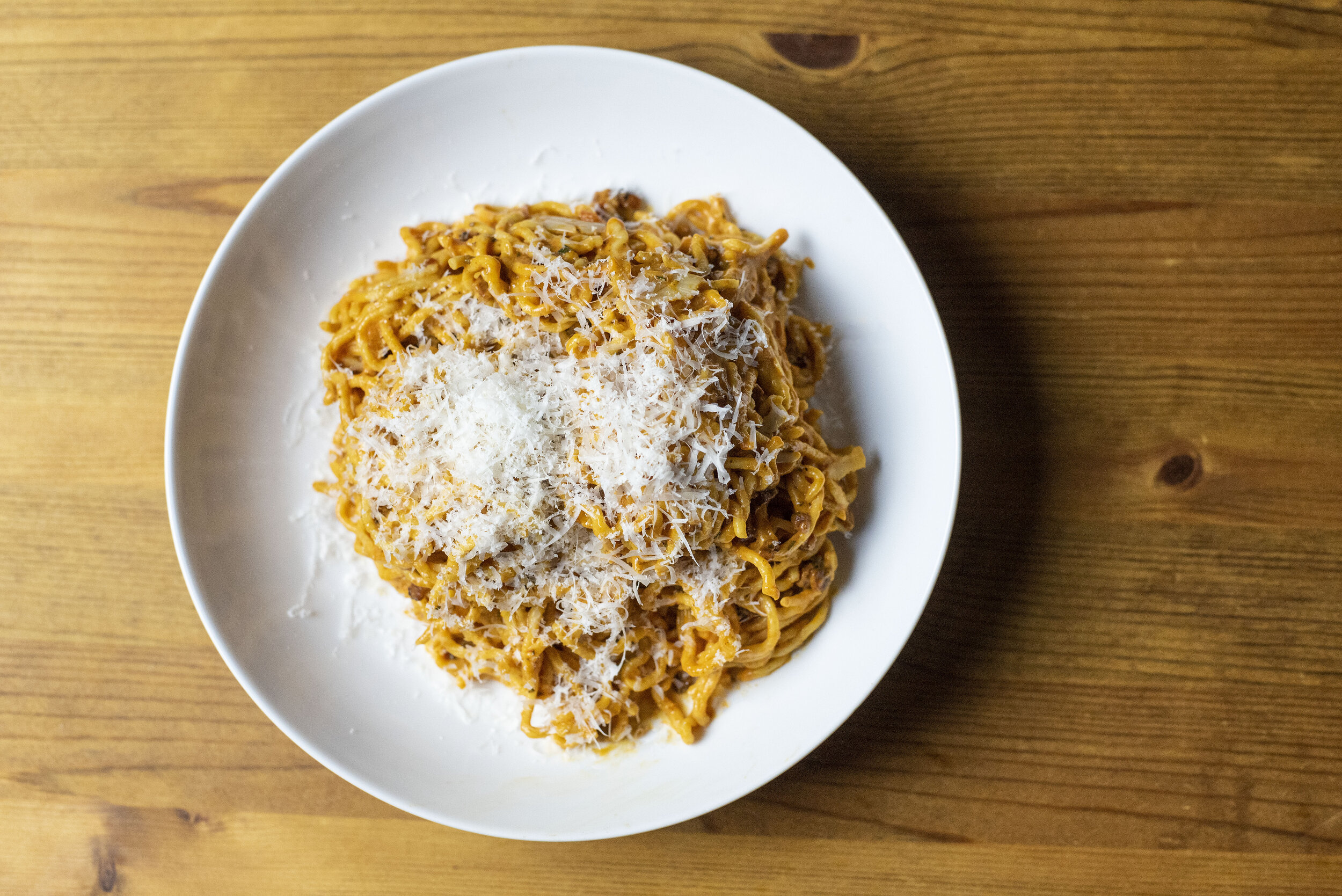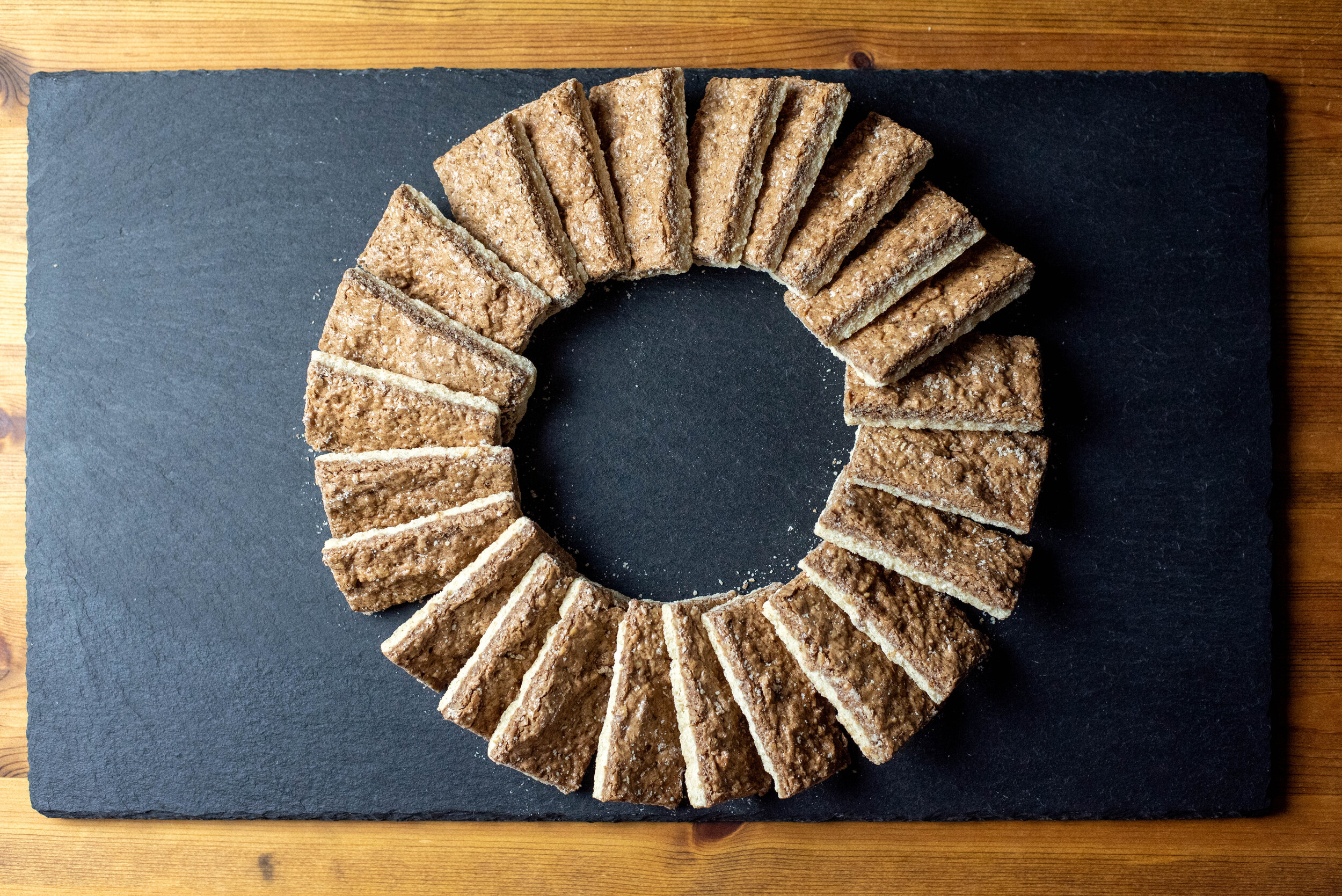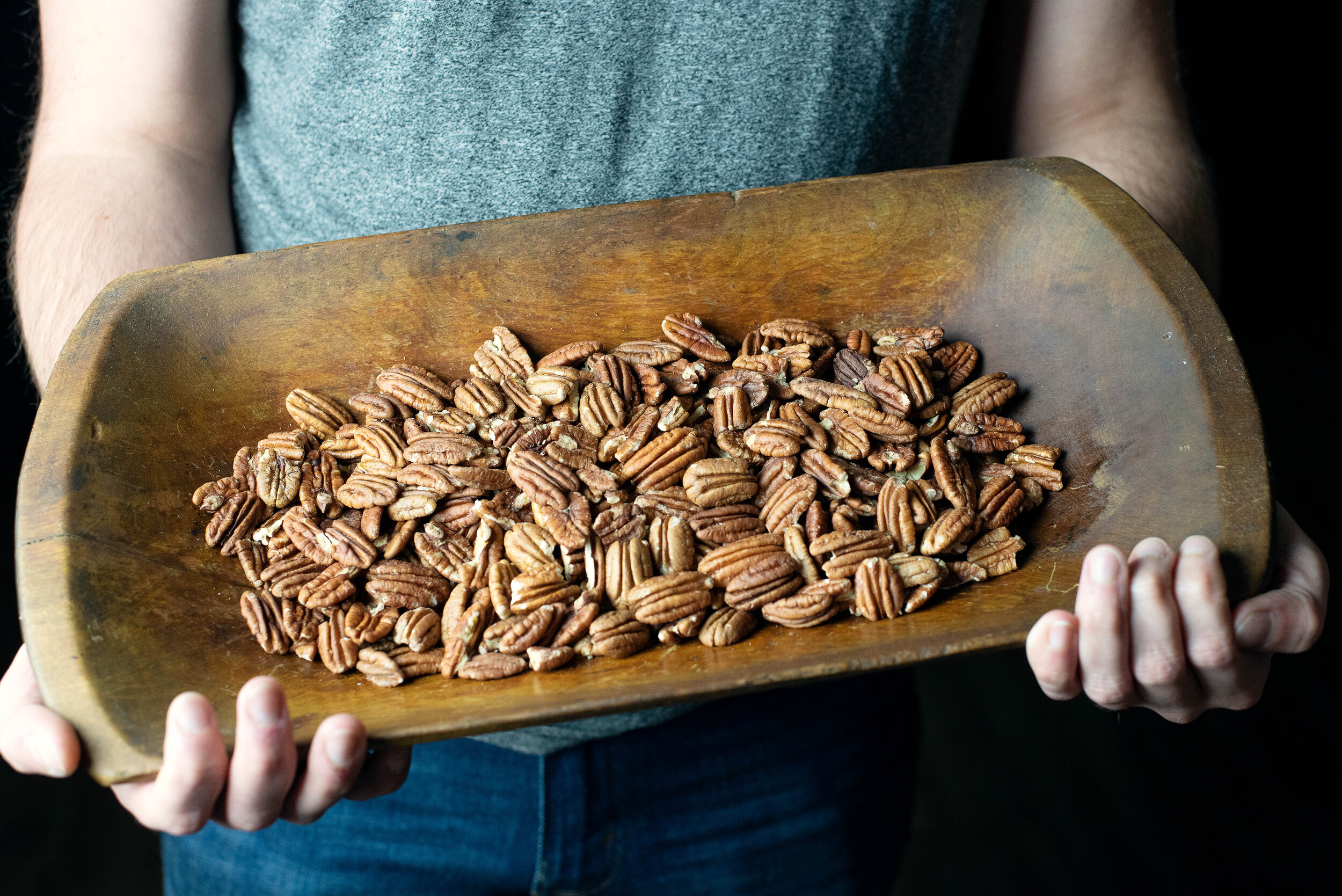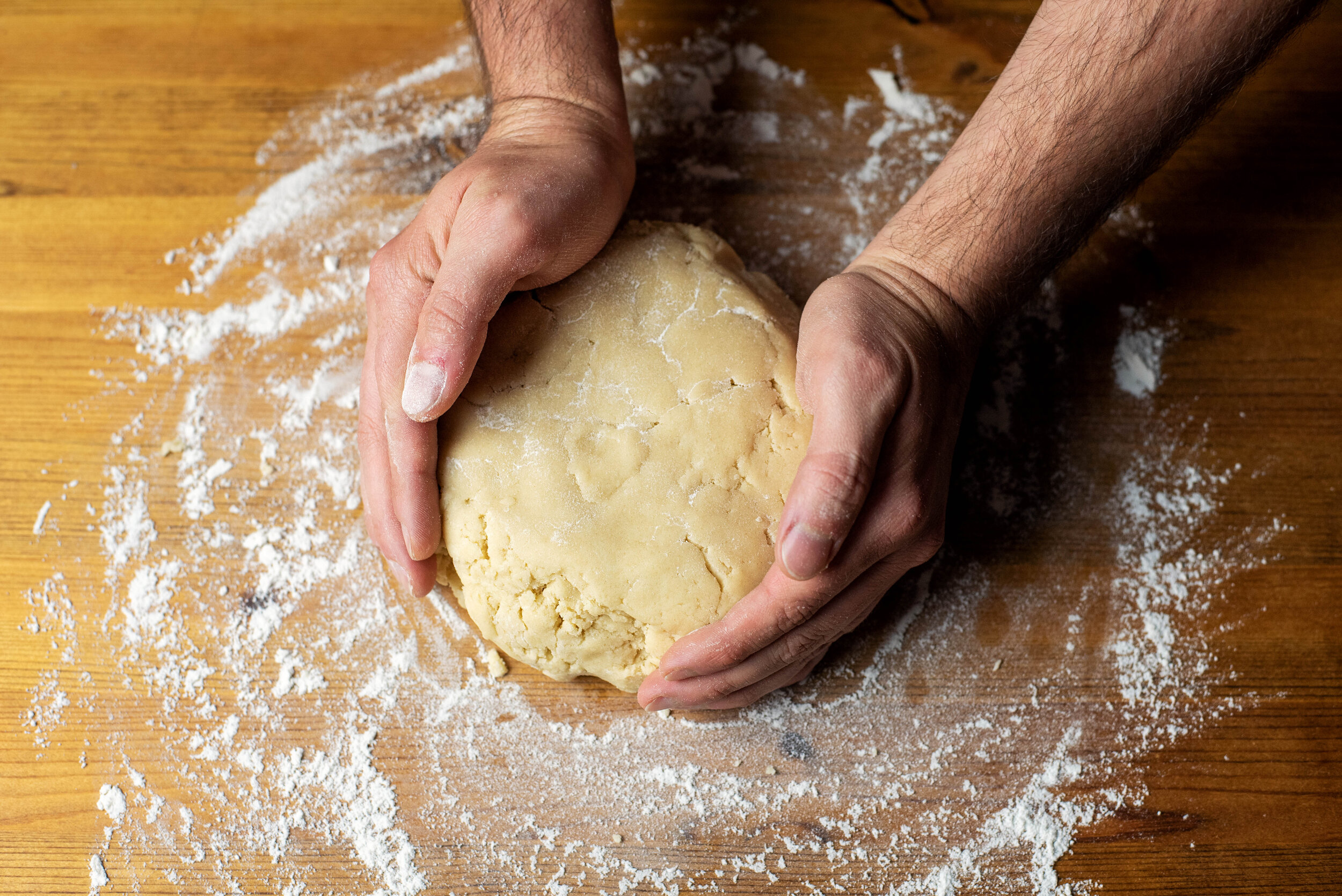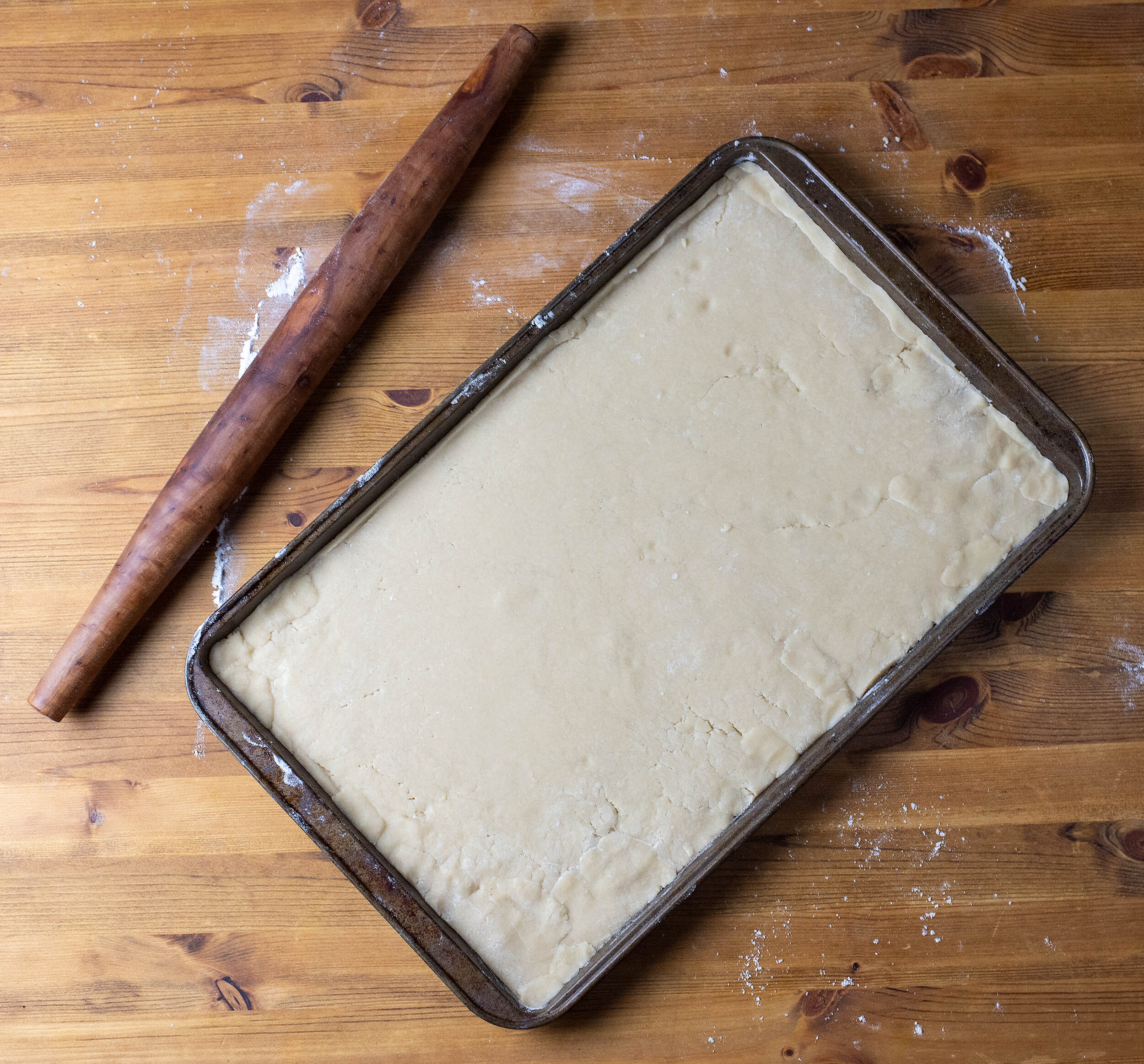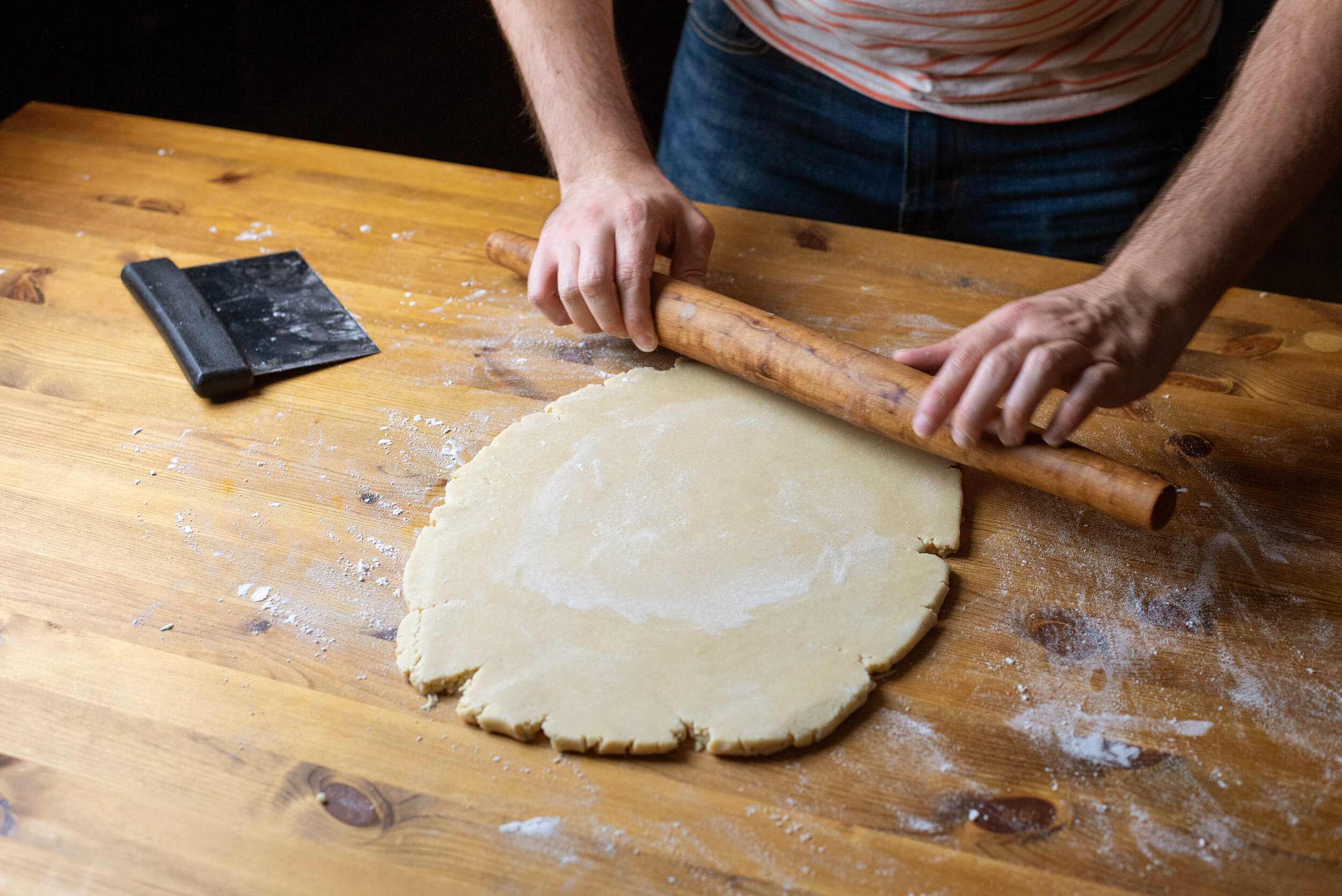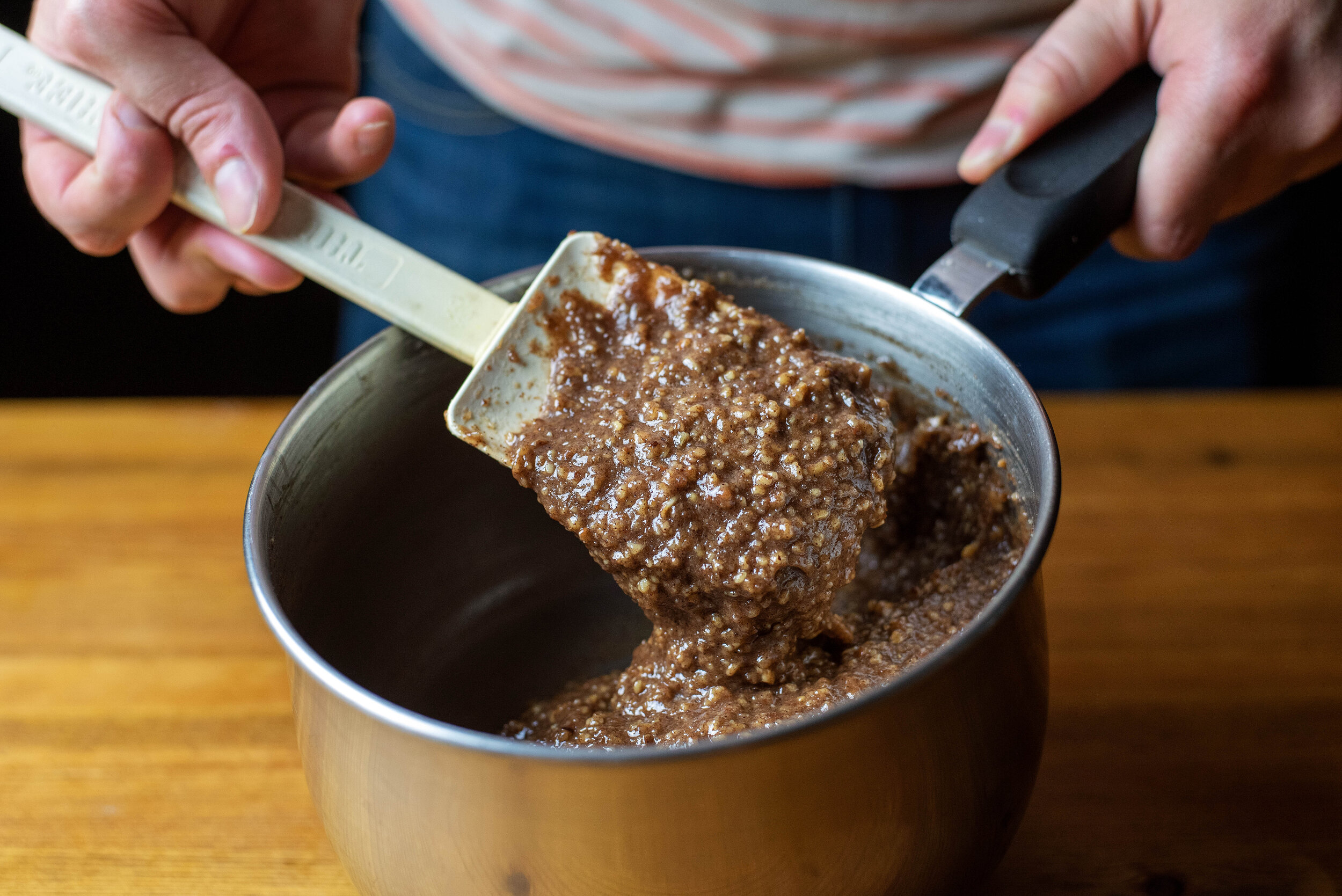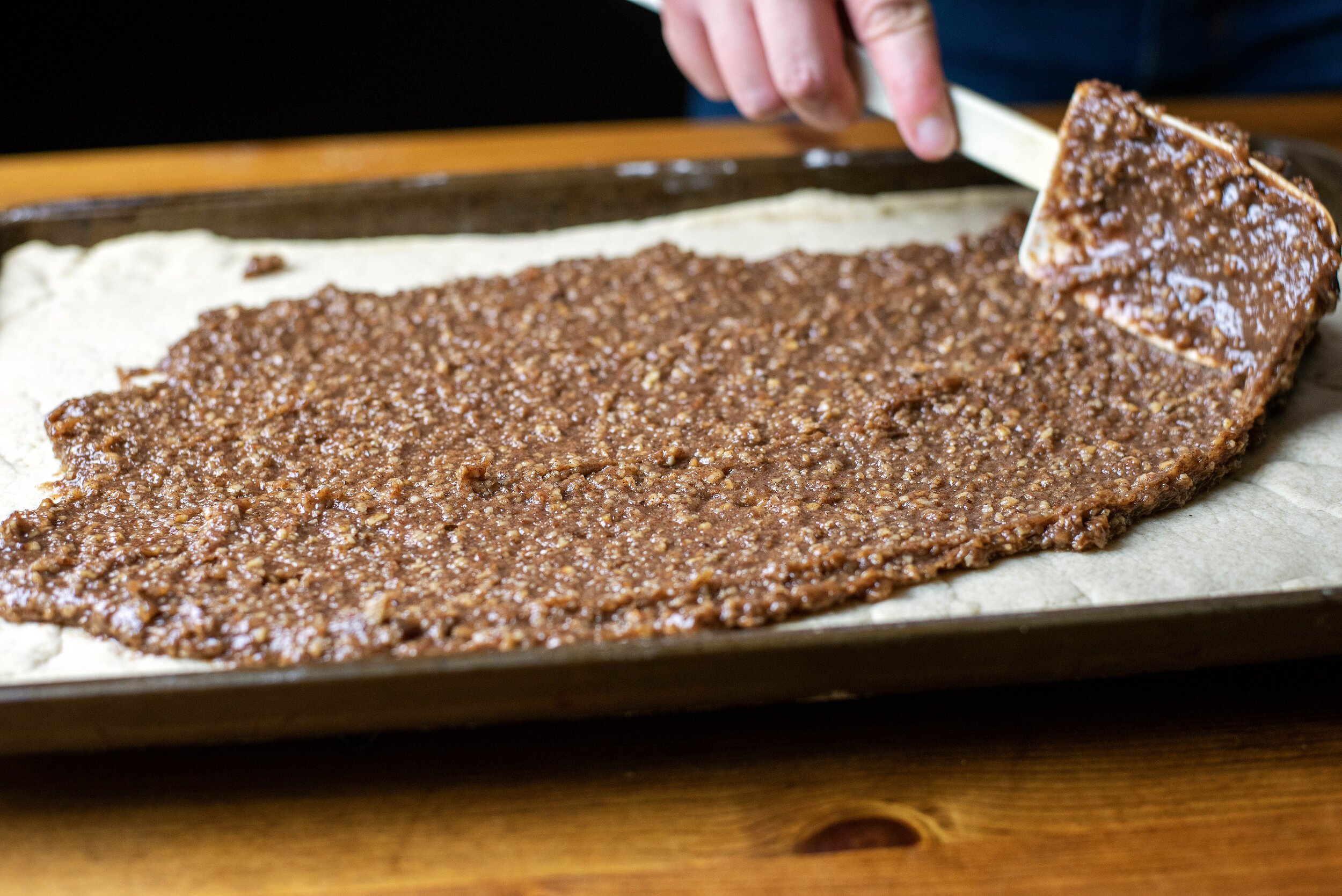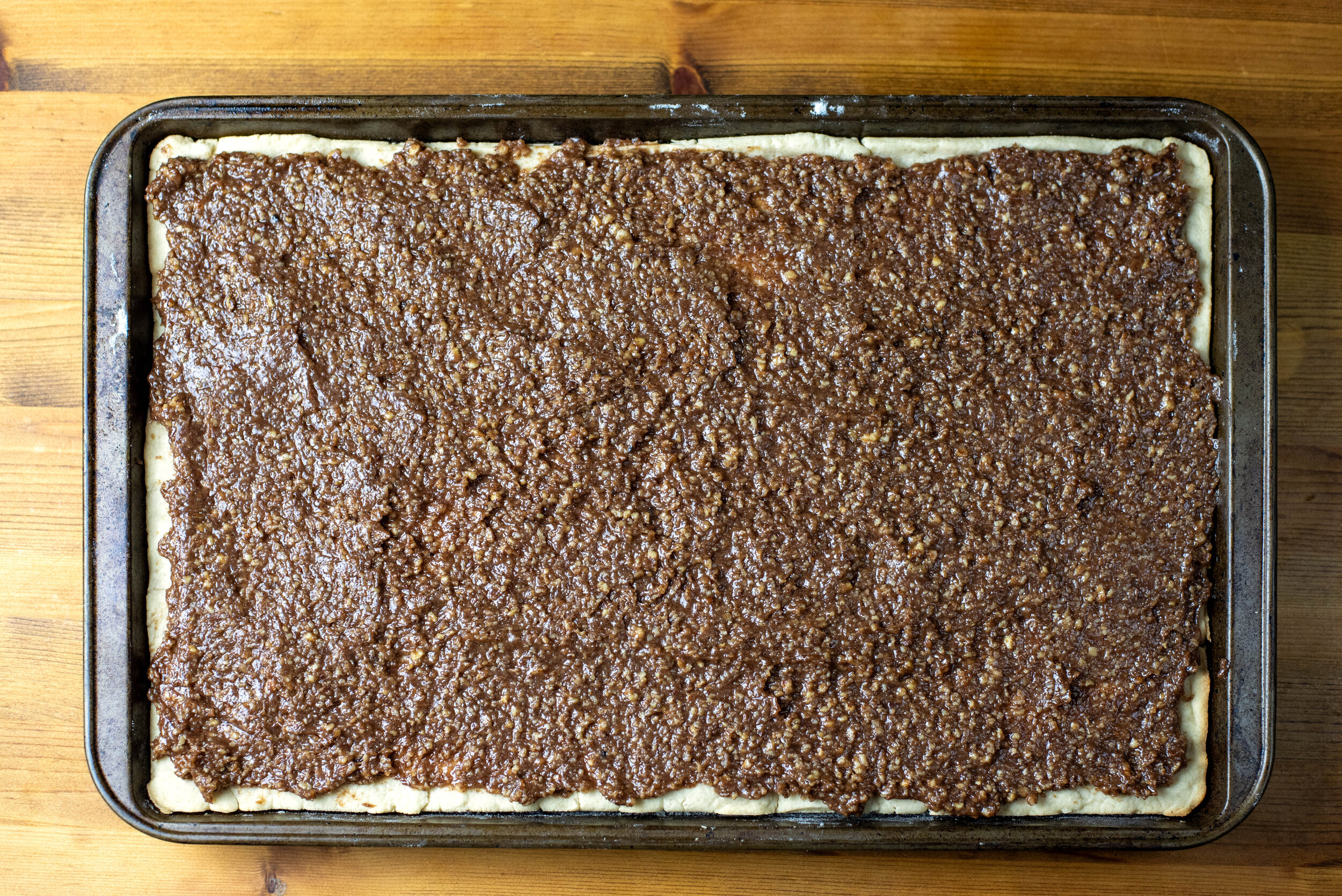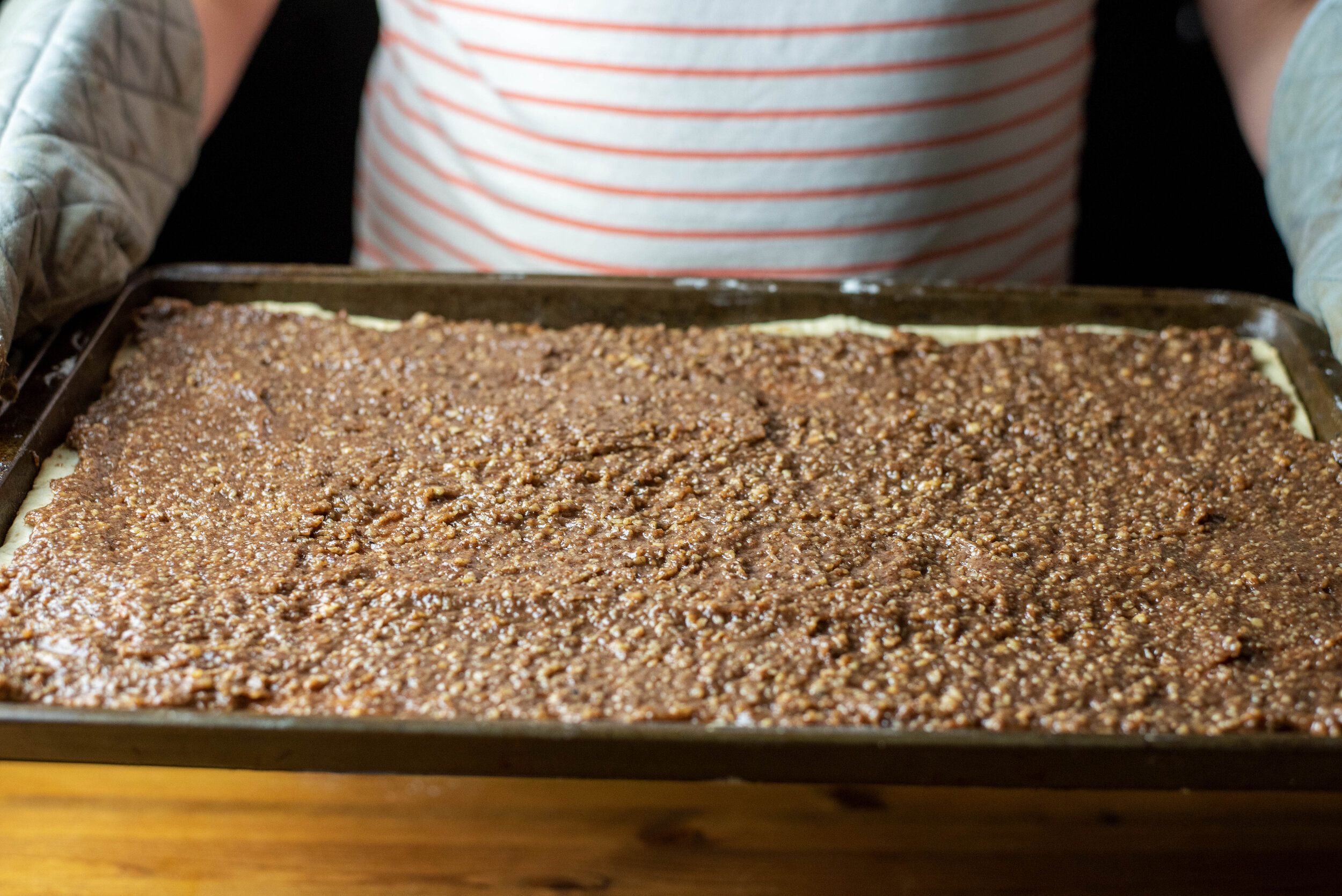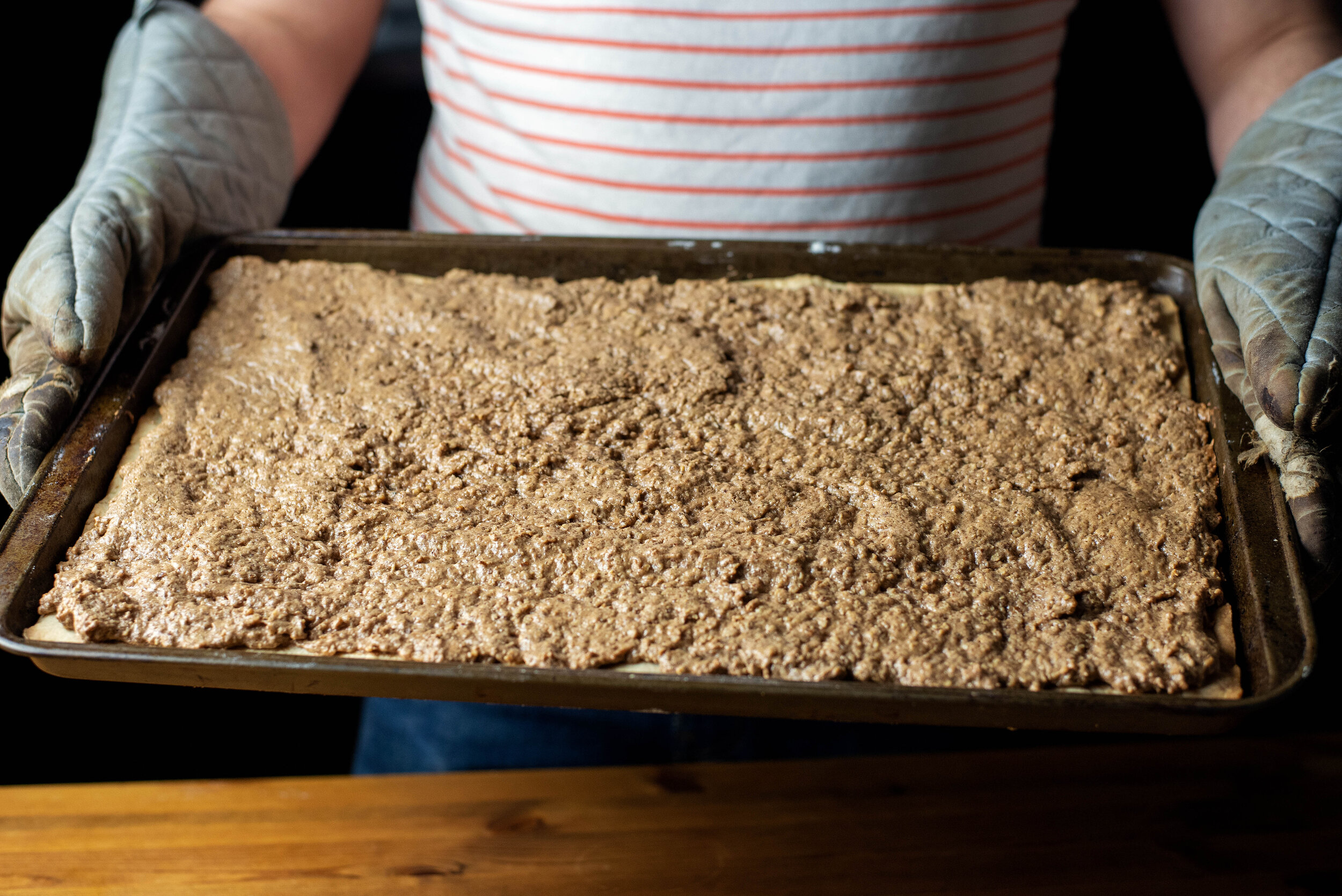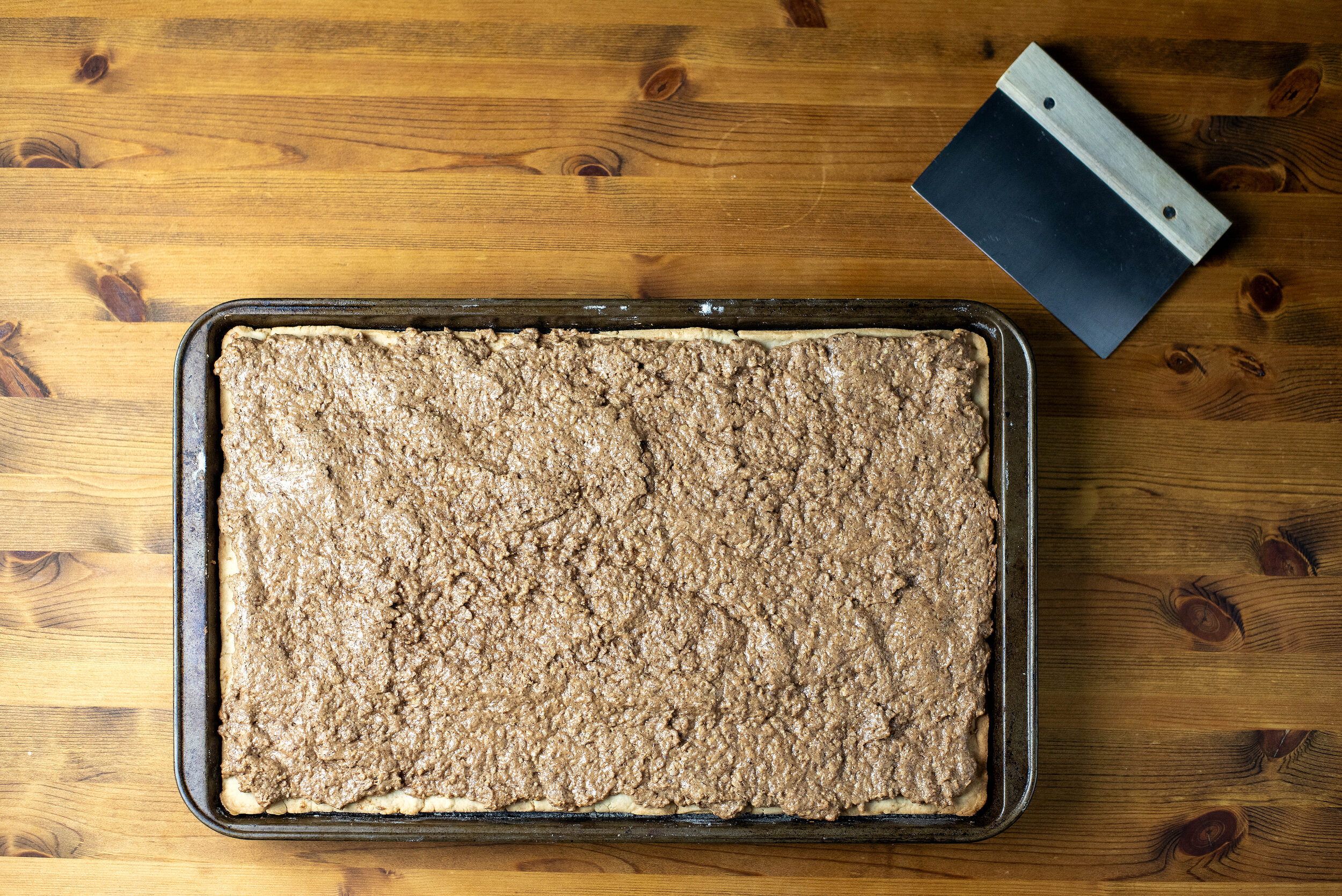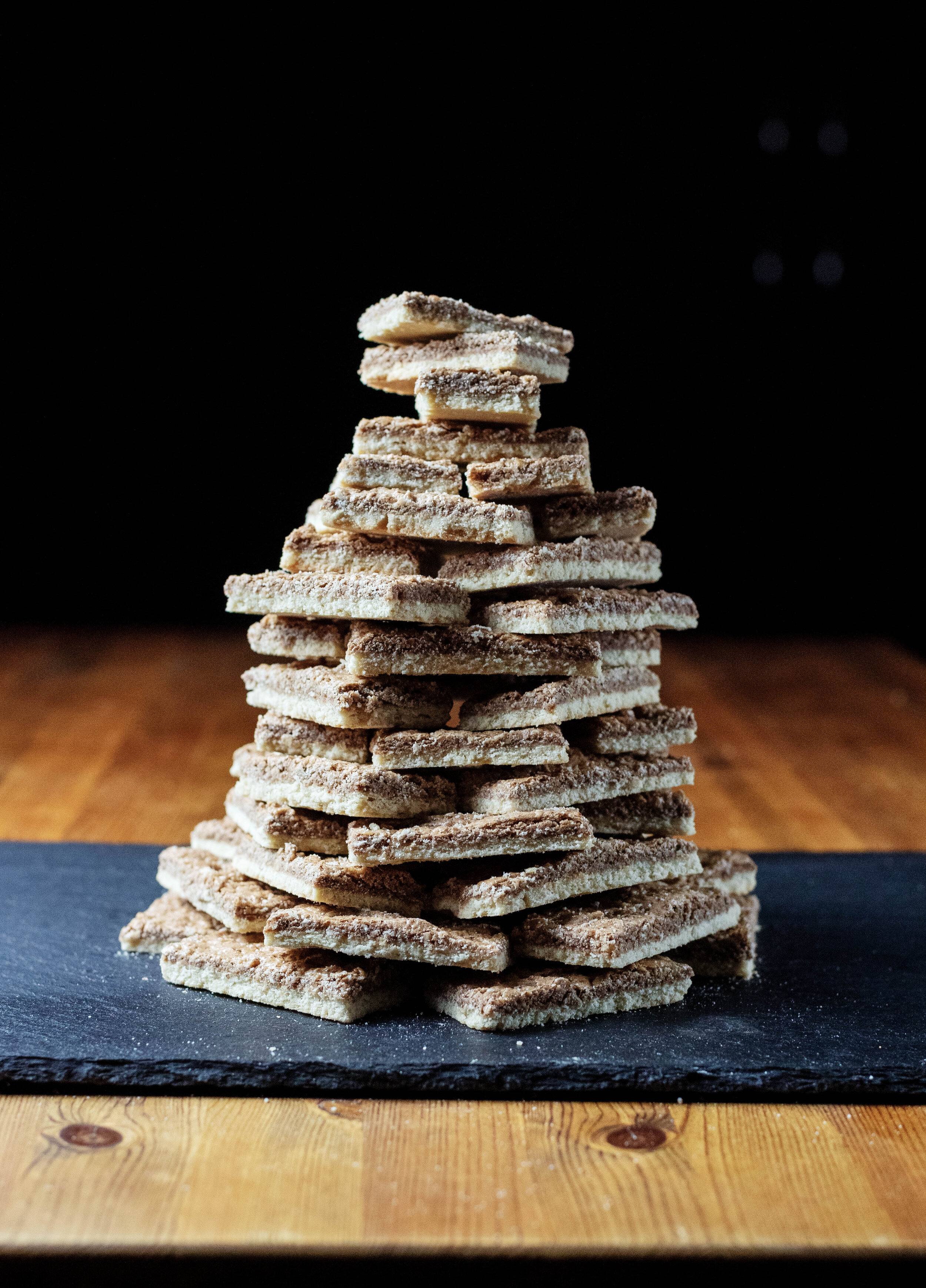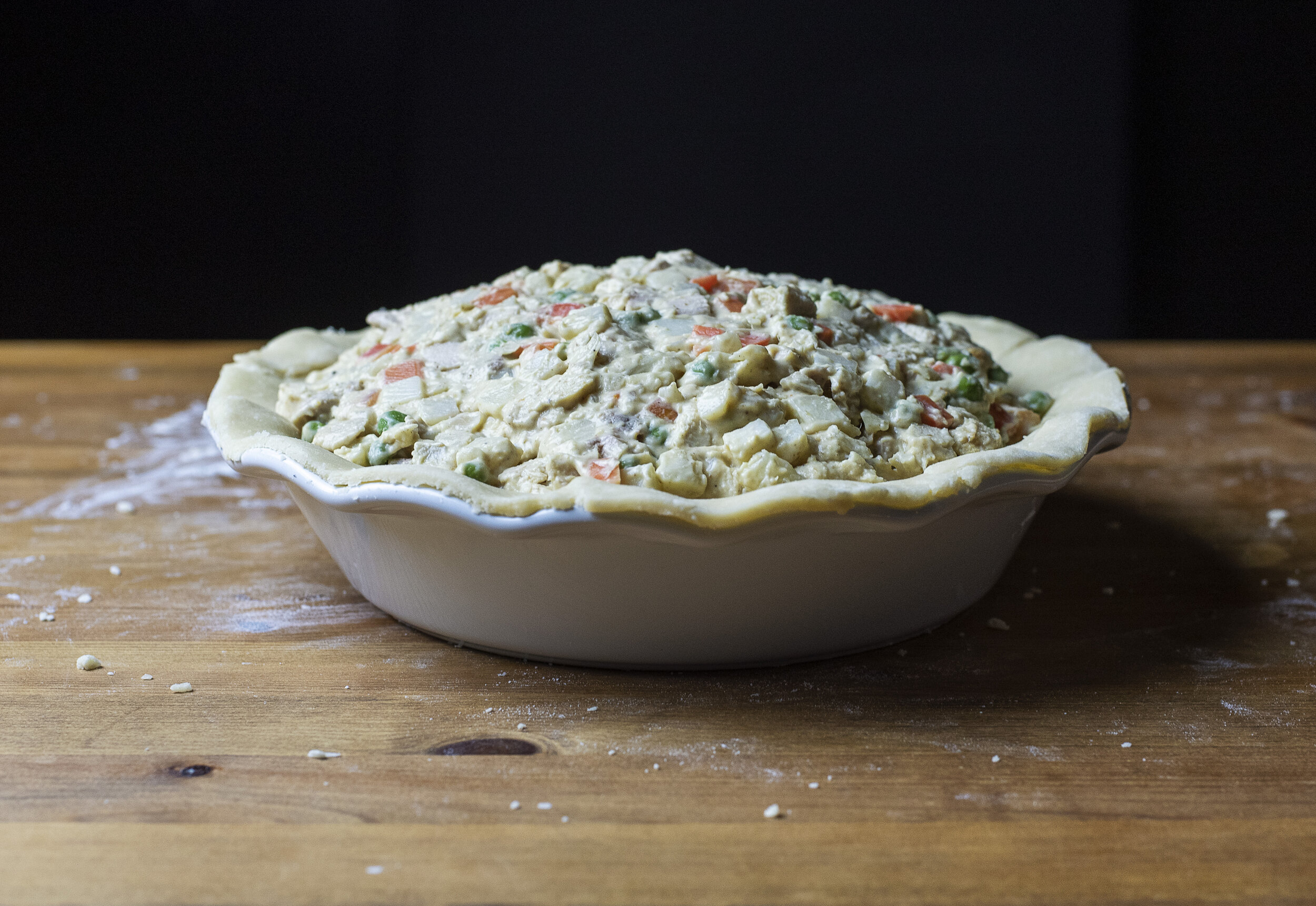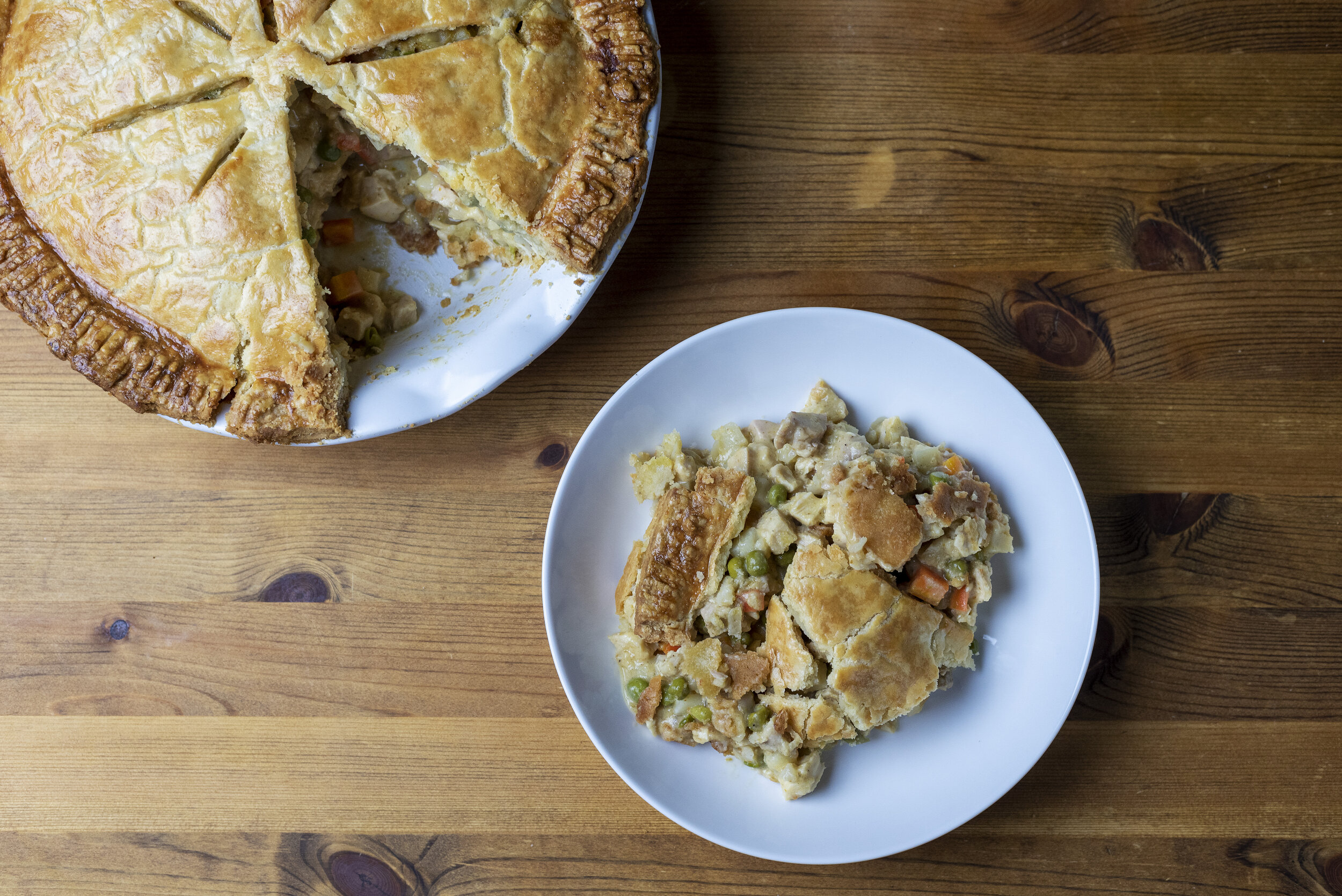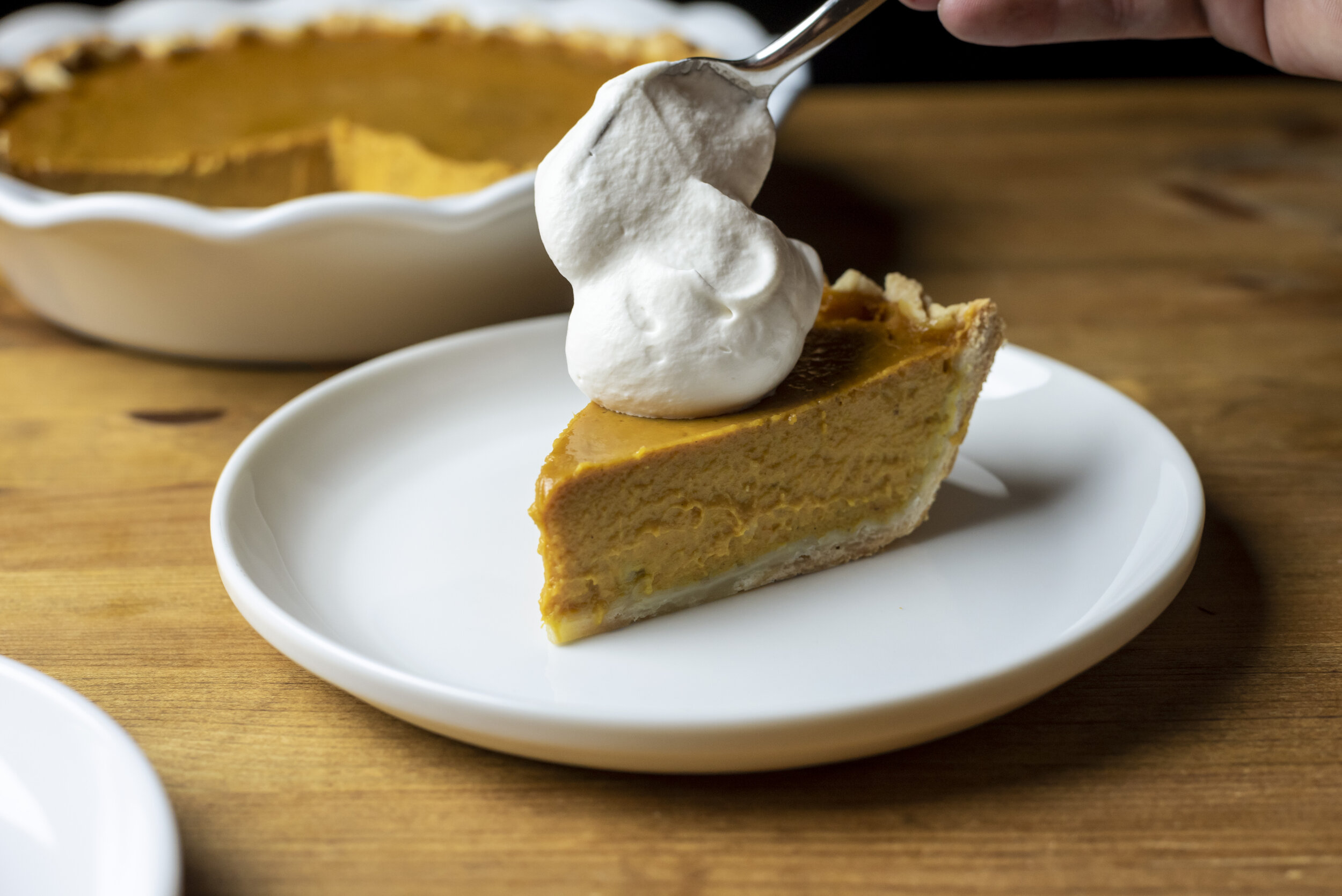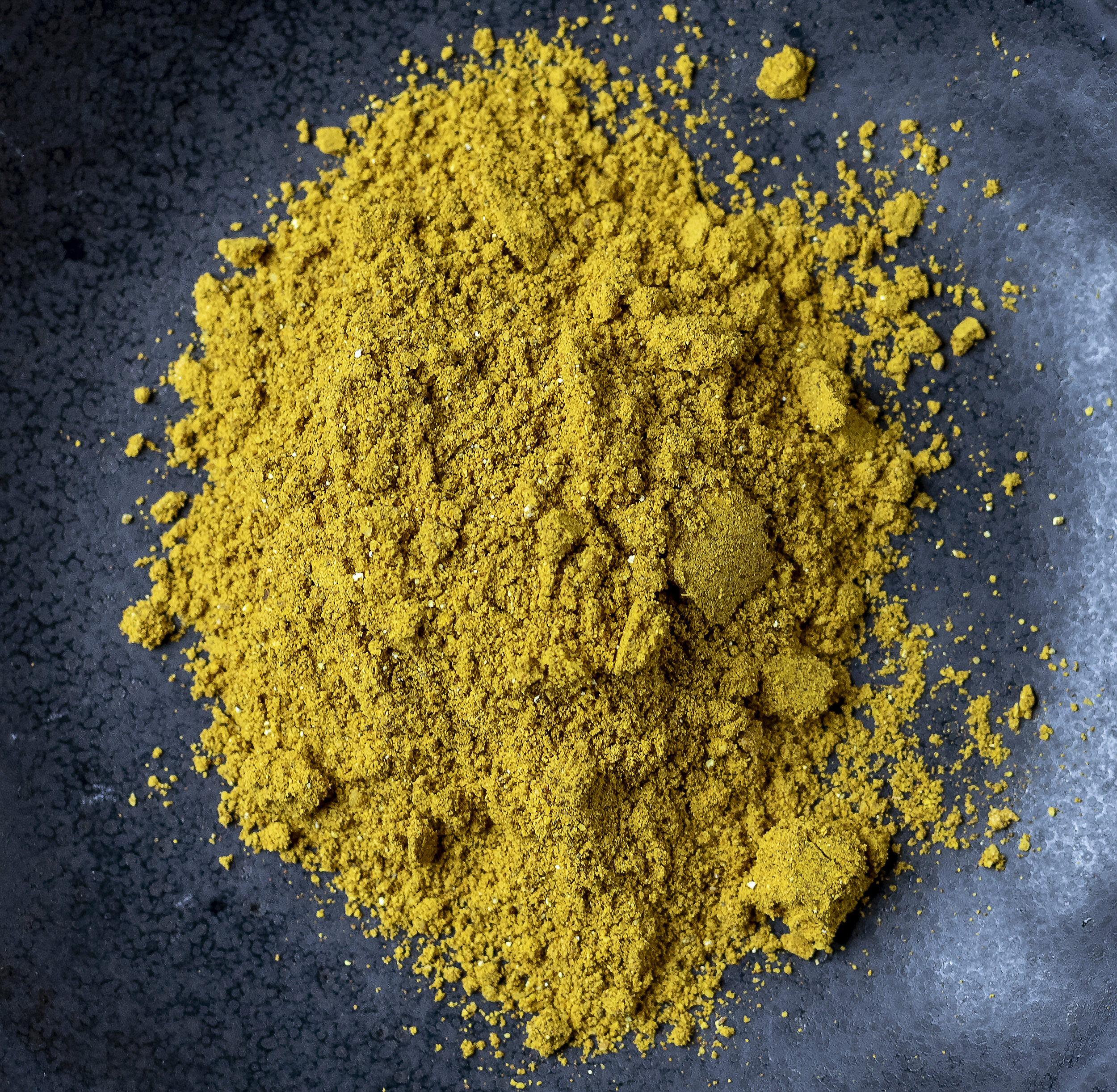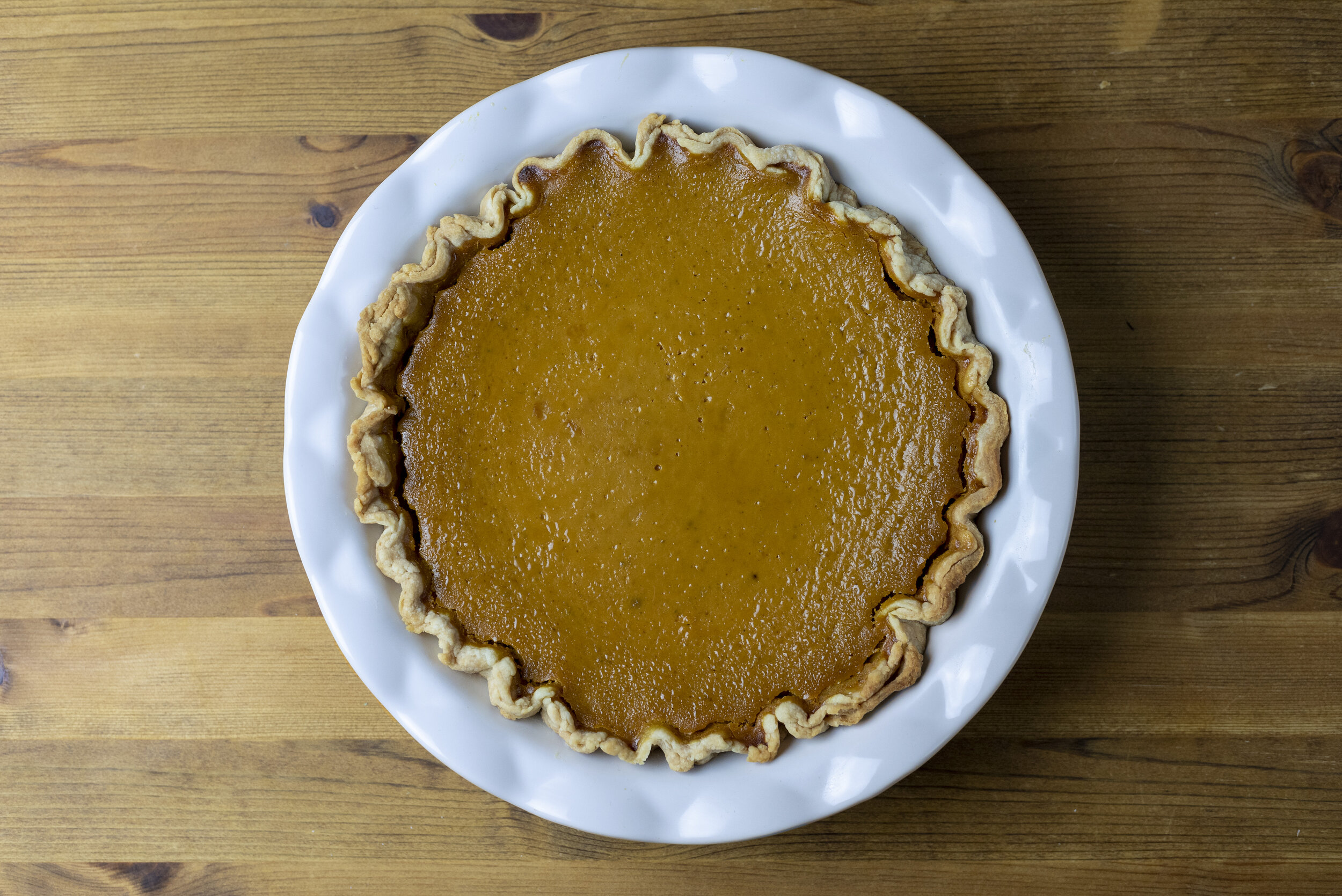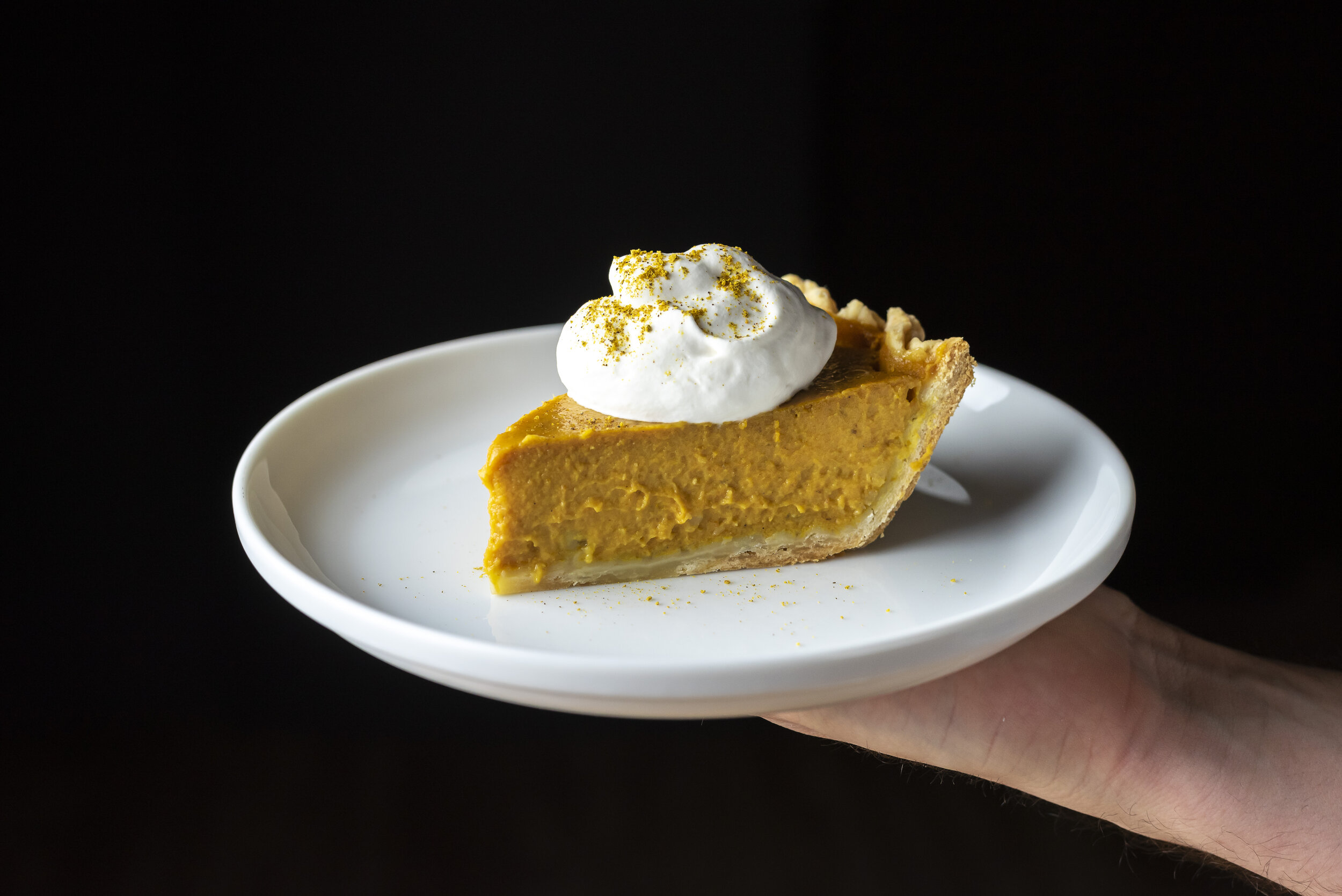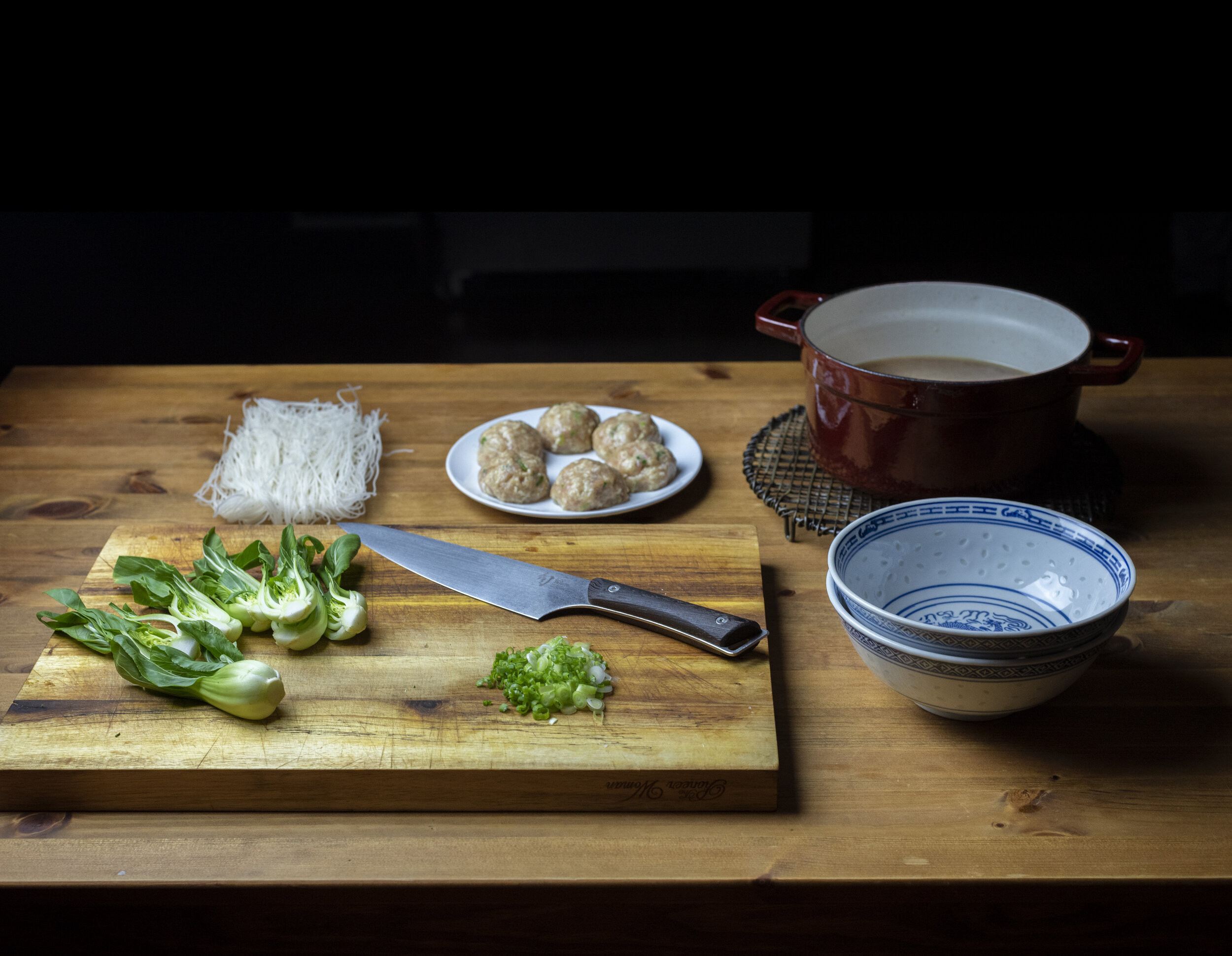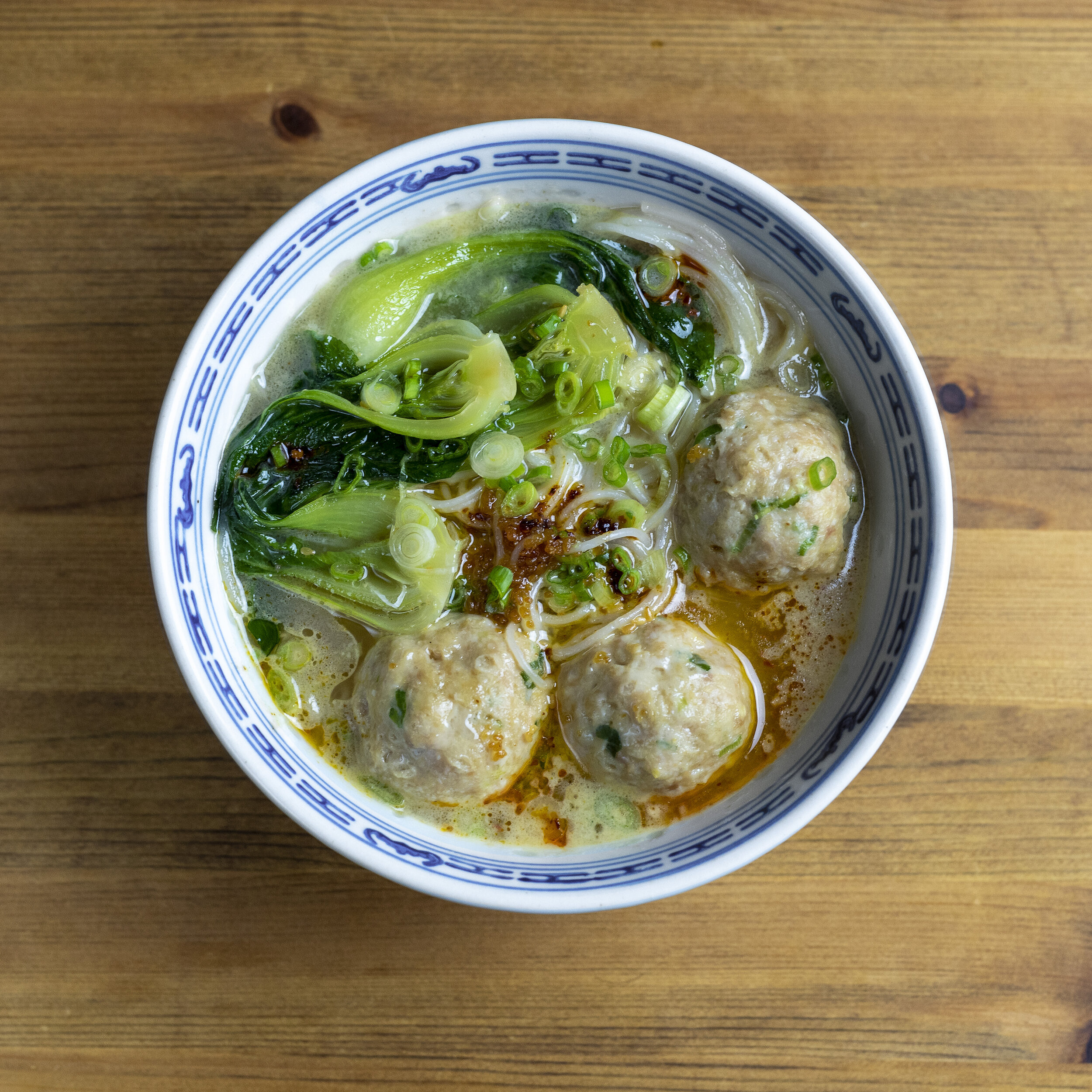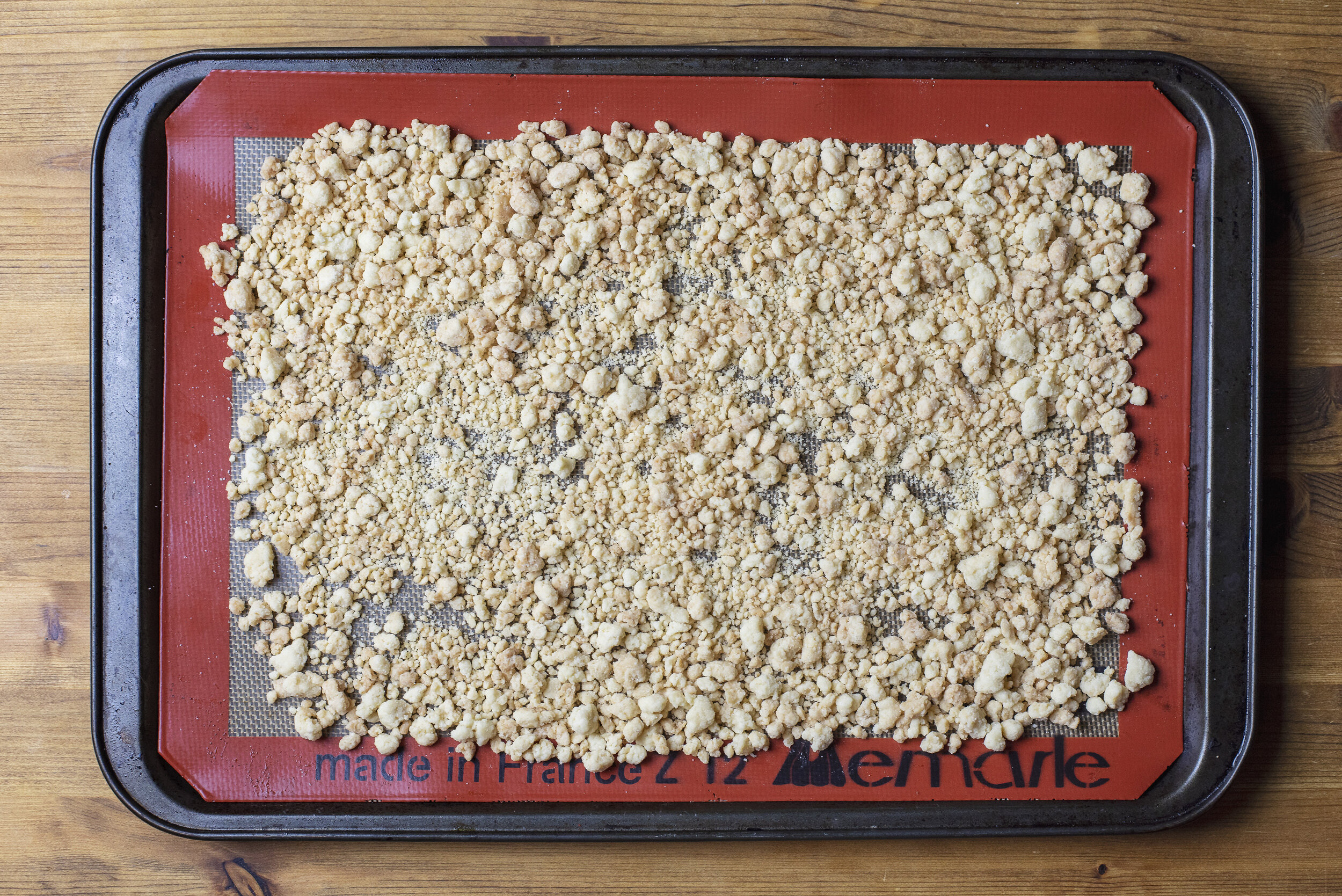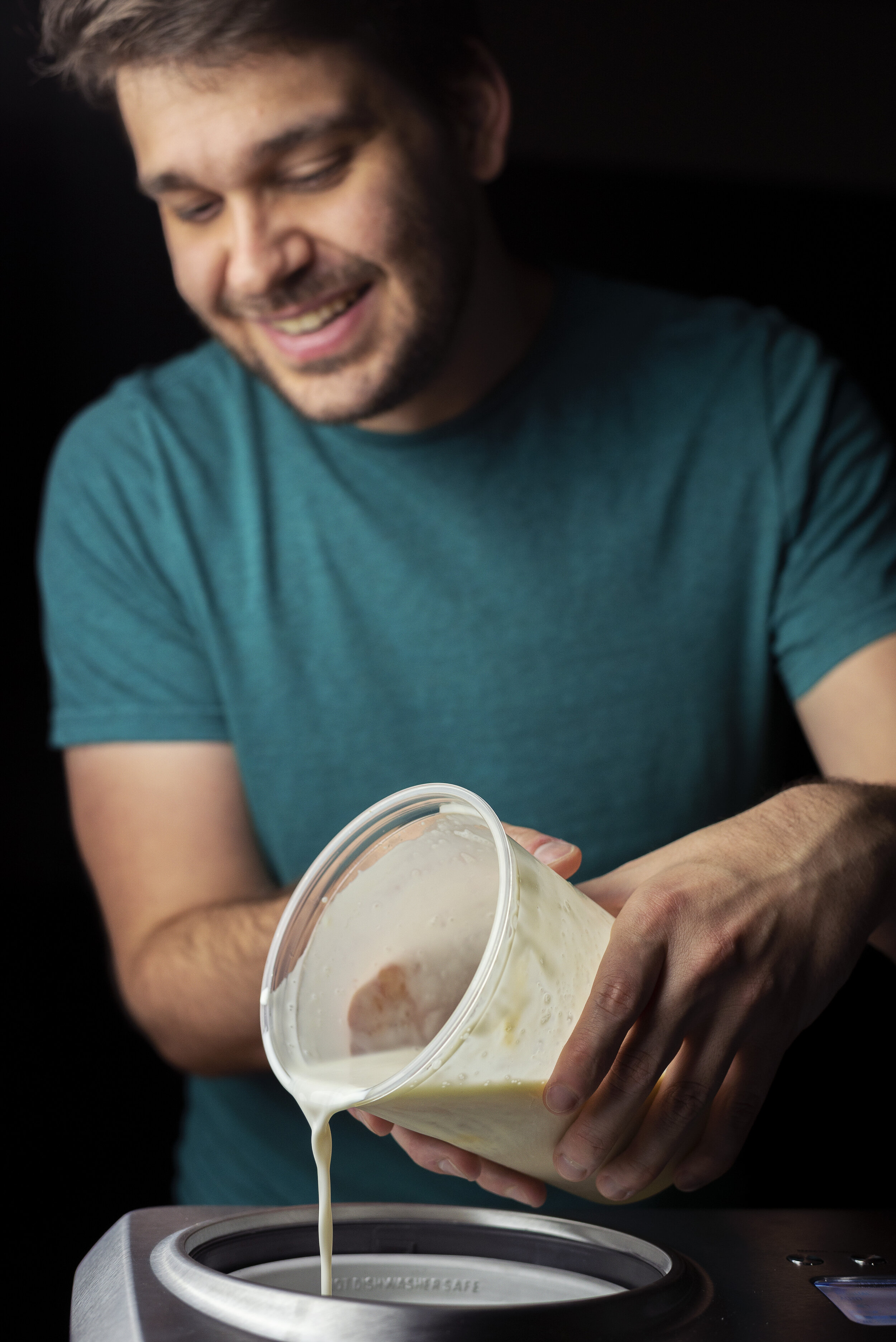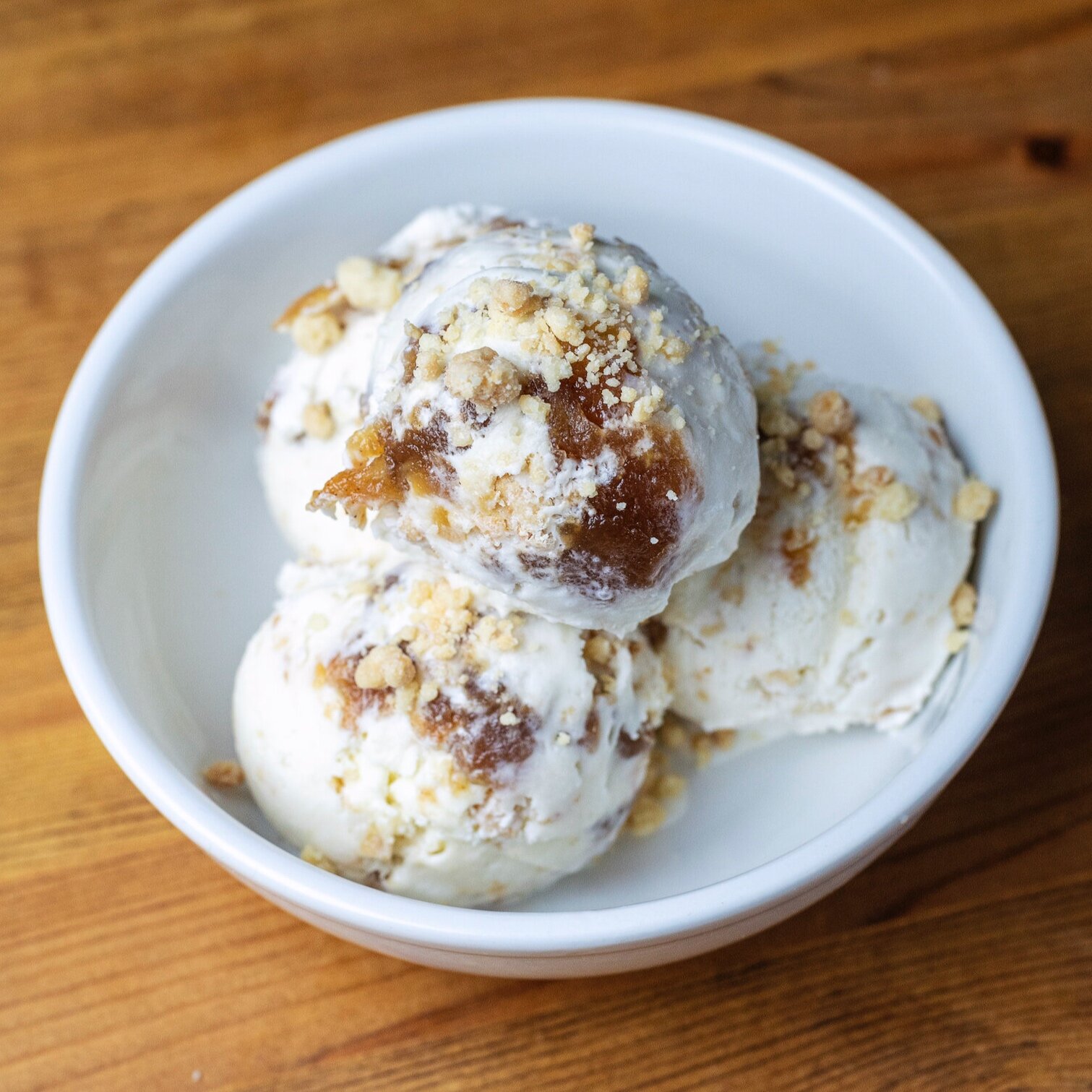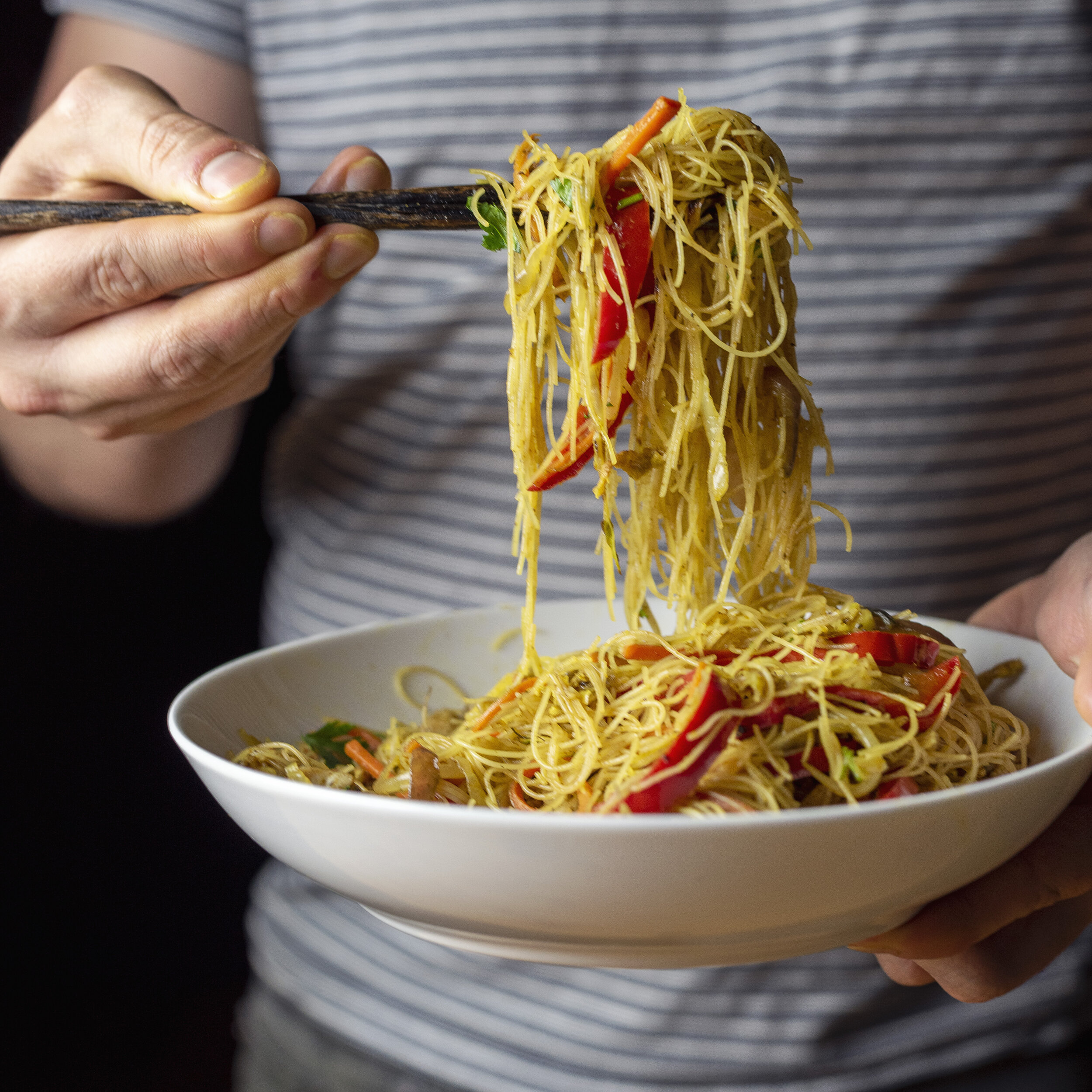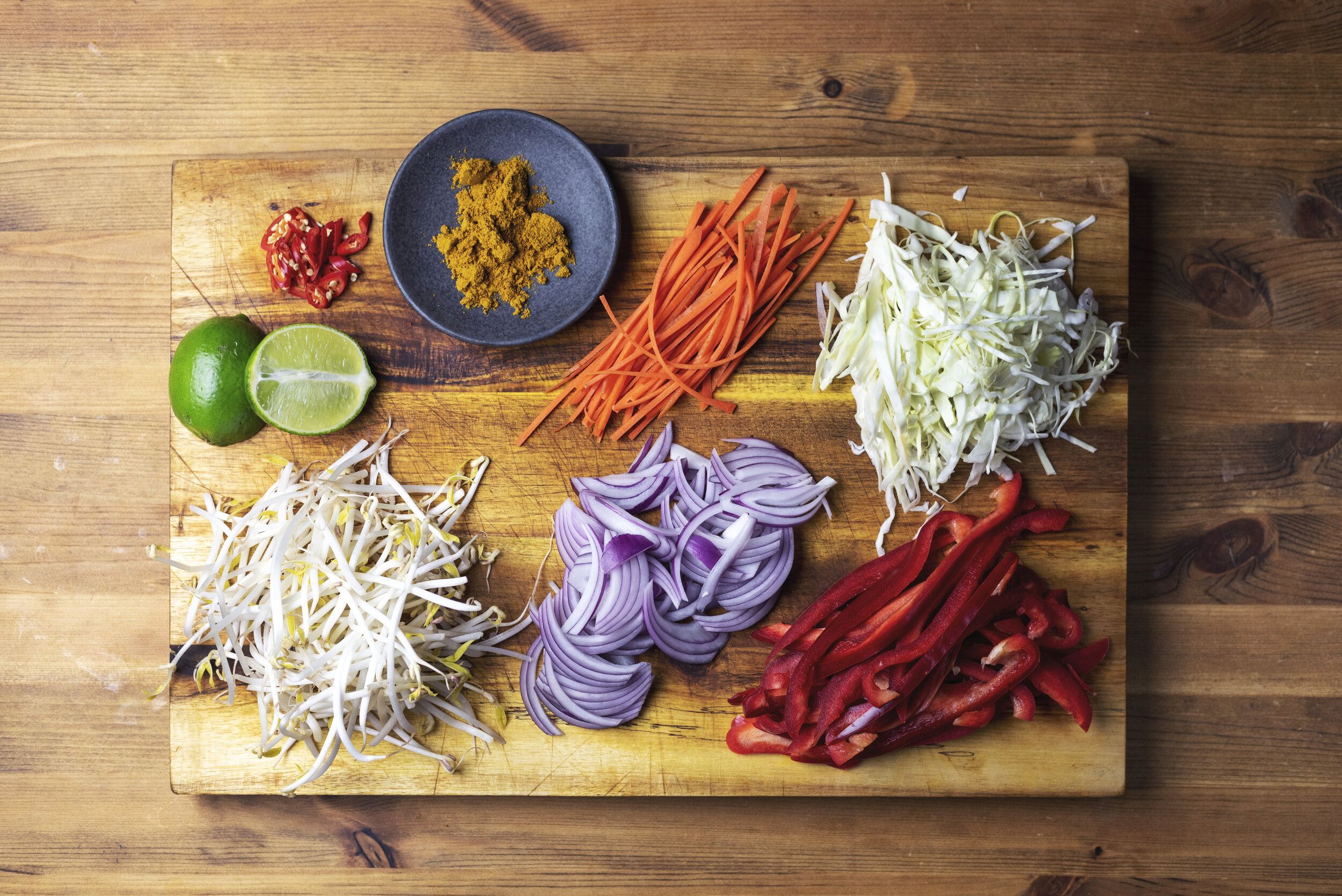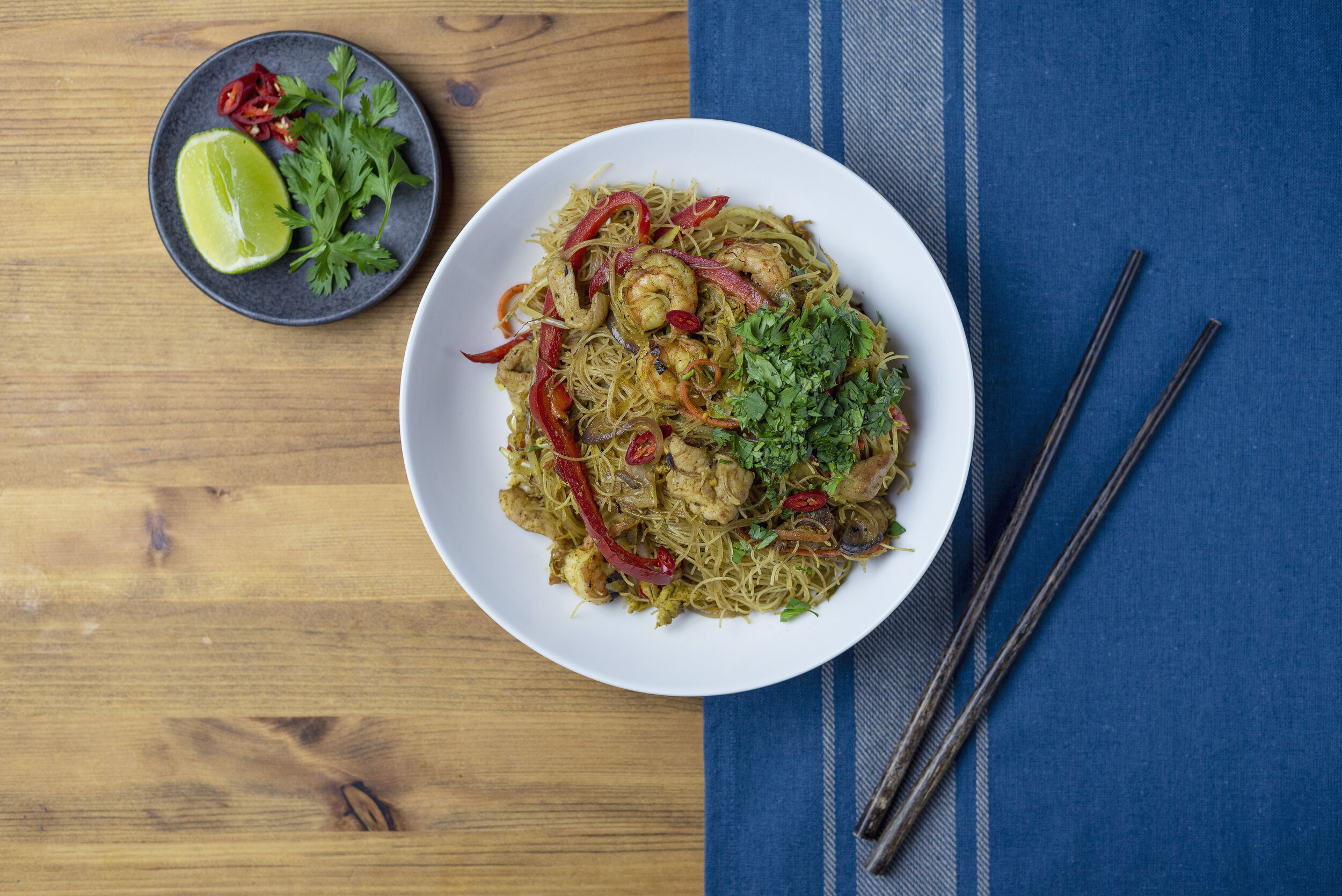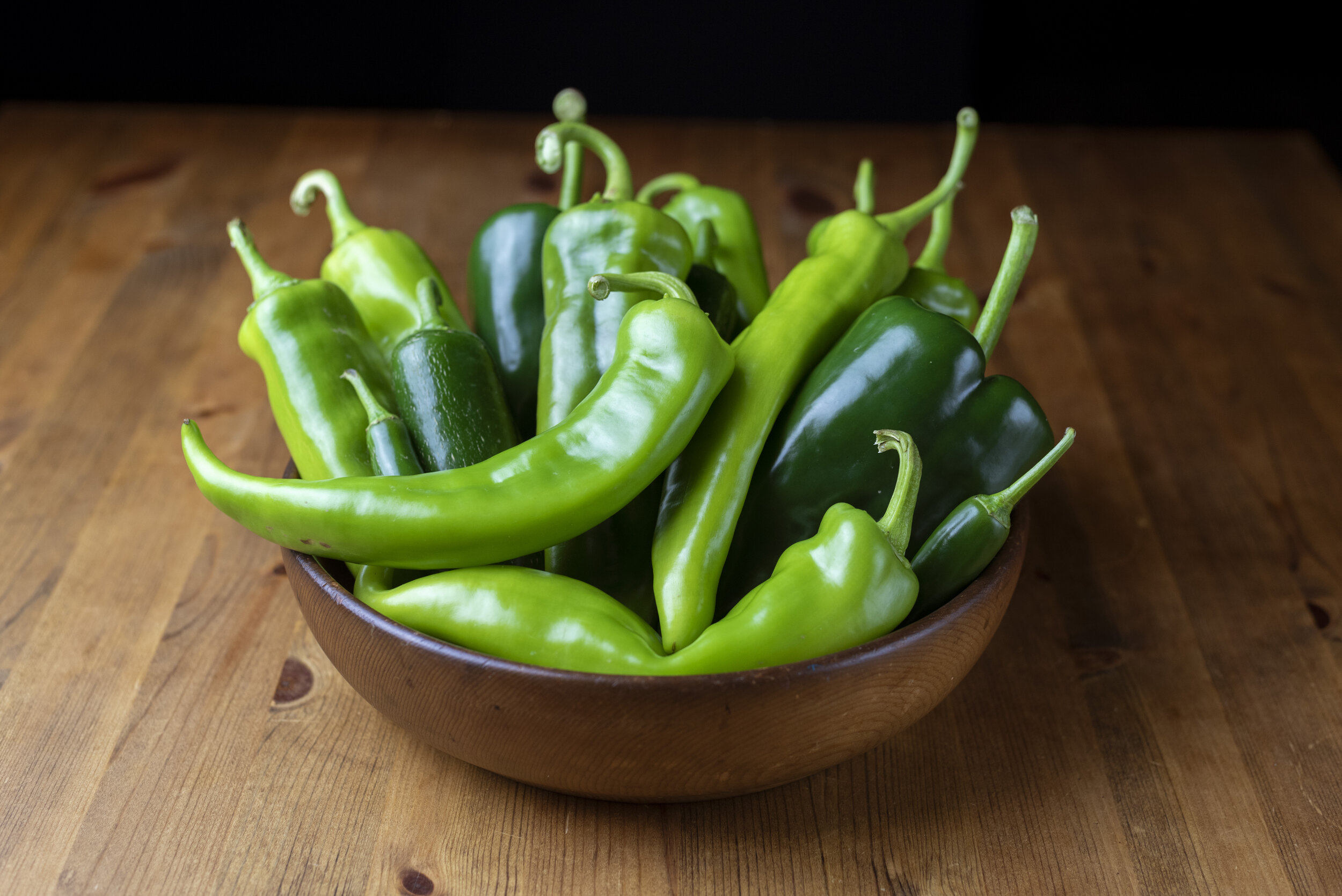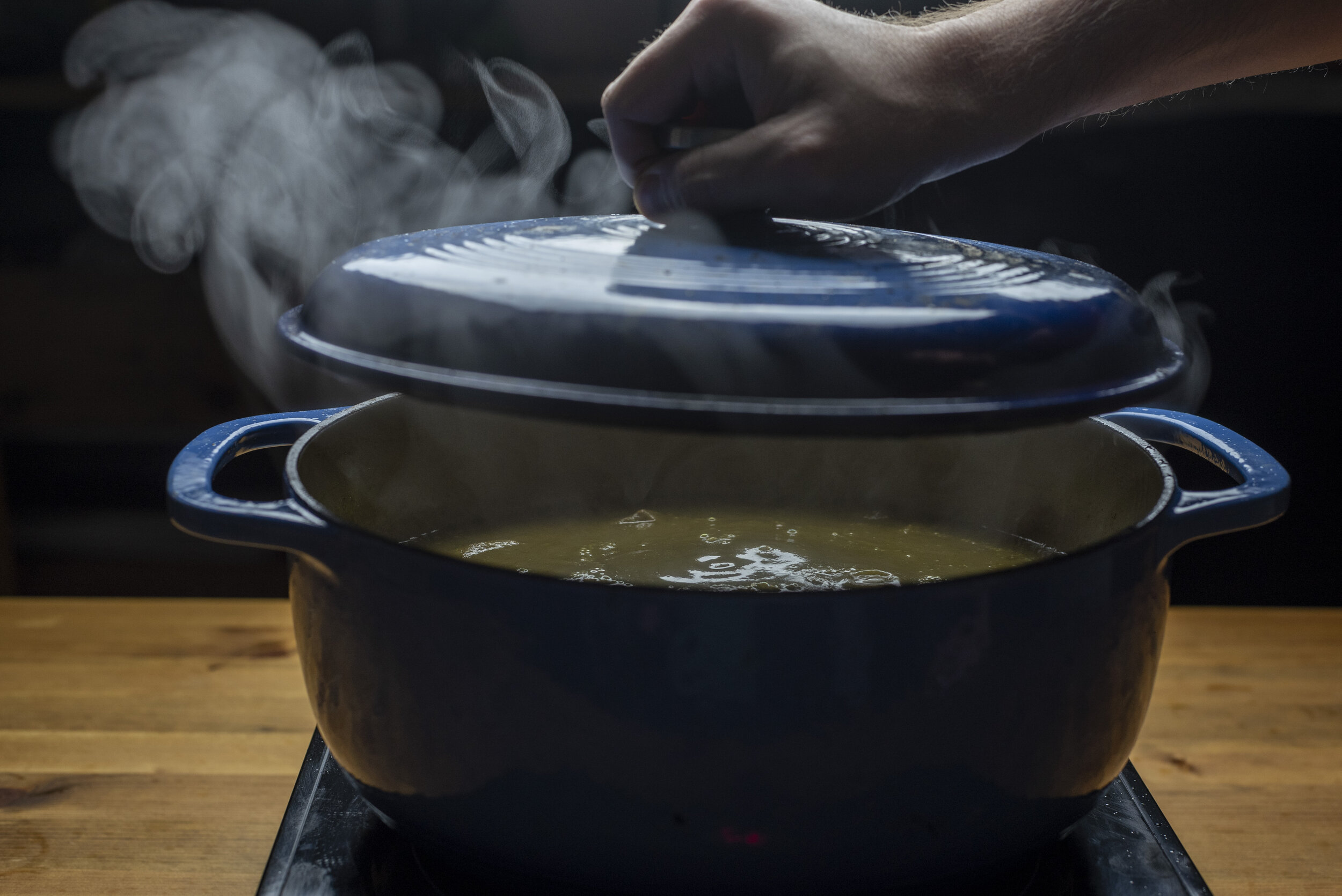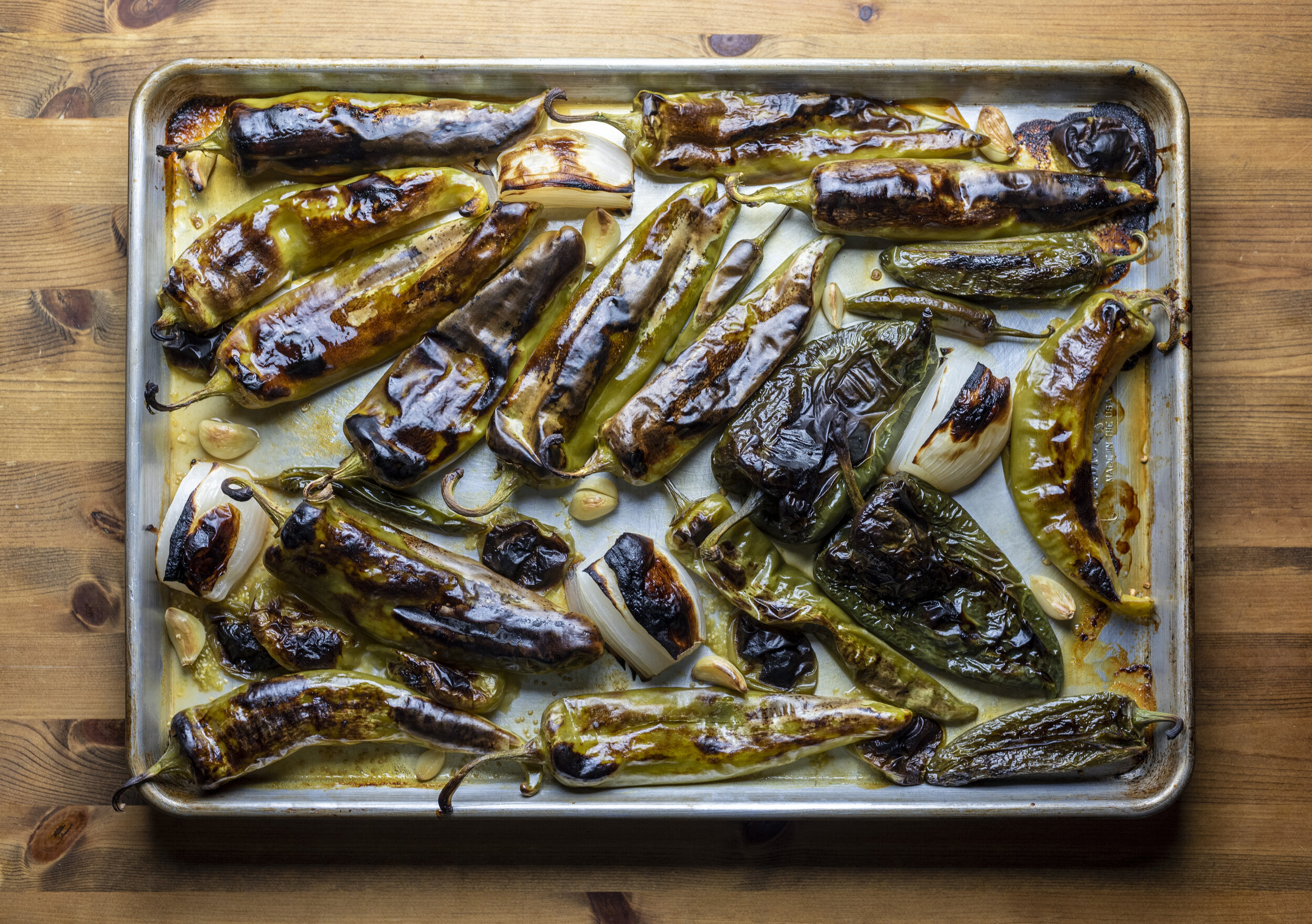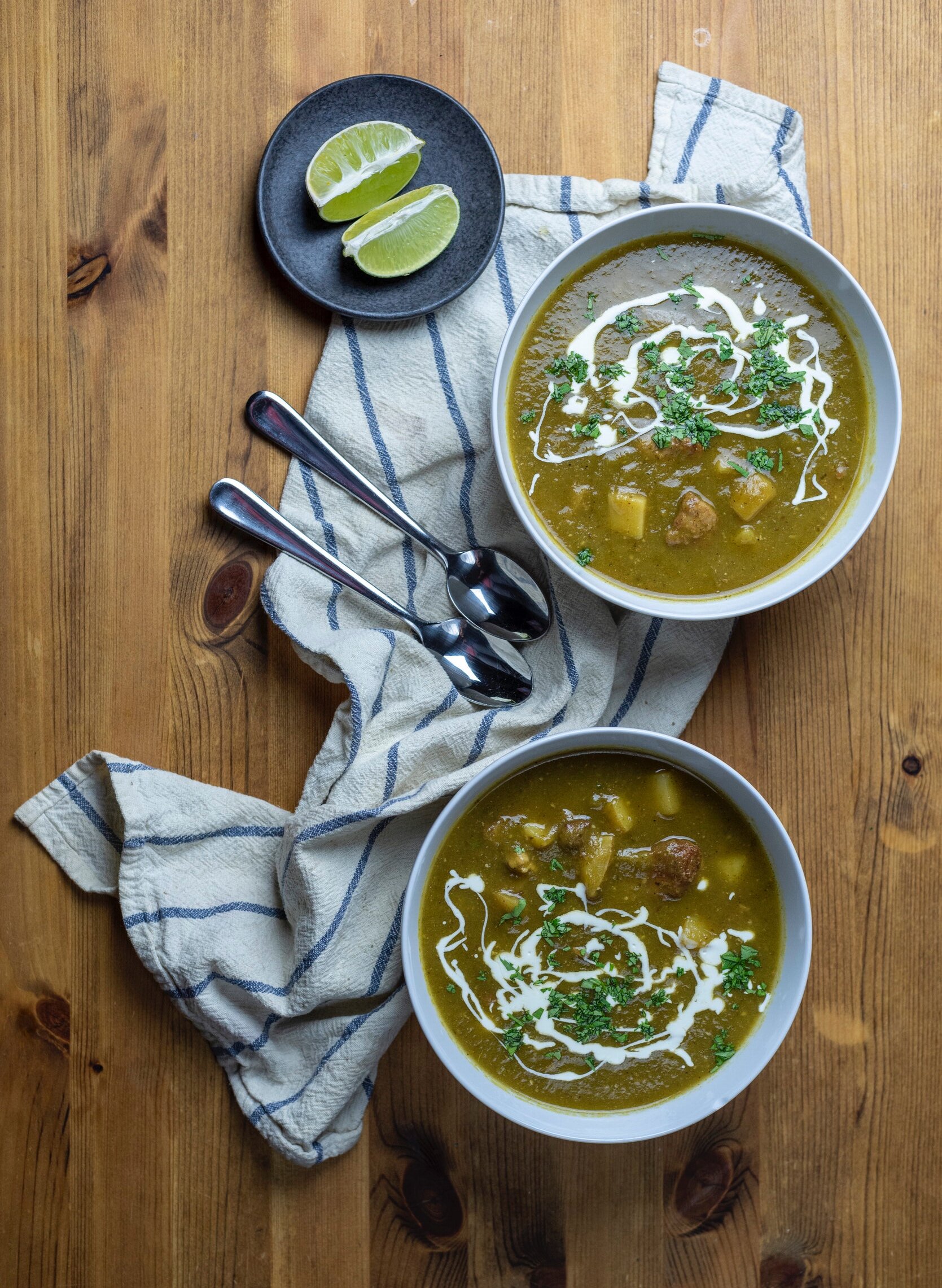I love pie. Nate does not.
Even though he’s wrong, I’ve grown to accept it over the course of our relationship. He’ll eat it a la mode on holidays even if it isn’t his cup of tea, but recently I stumbled upon a rather interesting compromise: Nate actually really enjoys pie as long as it’s inside of an ice cream, and not underneath one.
What a discovery. I’m going to take advantage of it any chance I get.
The pie crumb used in this ice cream is a recipe made by Christina Tosi (a baking goddess) in one of my all time favorite baking cookbooks: her first Milk Bar cookbook. It tastes almost like pie crust flavored breakfast cereal, so be prepared to utilize every ounce of self-control you have to not eat it when it comes out of the oven so that you have enough for the ice cream.
At this recipe’s core (hurr hurr) it’s quite versatile. This version calls for homemade apple pie filling (and it’s stupid good), but really, it’s just mimicking pie a la mode; so what’s to stop you from using a different kind of pie filling to suit your taste?
Absolutely nothing.
Make a blackberry pie filling and use it instead if you’re feeling it. Give strawberry rhubarb a shot. Try out cherry or blueberry. Maybe pear, plum, or peach (or one of each?). Just make sure your pie filling ribbon is cooked down (you aren’t baking it in the oven, after all) and that you have about 1 cup of it to disperse throughout the ice cream, and a whole world of possibilities will open up for you.
Be a pie slut. Do what you want.
Apple Pie Ice Cream:
Ice Cream Base:
-
2 cups heavy cream
-
1 cup milk
-
½ cup sugar
-
2 tbs corn syrup
-
1 tsp vanilla extract
-
¼ tsp salt
Mix the milk, sugar, corn syrup, vanilla extract, and salt together in a bowl until everything is incorporated, then add all of the heavy cream. Stir until all ingredients are completely integrated, then store the mixed base in an air tight container in the fridge until it’s cold.
Apple Pie Filling:
Note: We know that determining what kind of apple is best for pies if often a point of contention. We used Granny Smiths for this recipe, and it turned out amazing, but if you have a go-to variety that you like more for pie, you should use that one instead. Just…don’t use a Red Delicious. They are, in fact, not delicious at all. A gross mealy apple = a gross mealy pie filling. 0/10. Would not recommend.
In a small sauce pan, add the chopped apple, sugars, water, cinnamon, and nutmeg, then cook covered on medium heat for about 20 minutes. The apple should cook all the way through and begin to disintegrate. Remove the pan lid, then let the mixture reduce for about 10 more minutes, or until the pie filling thickens up and reaches a sexy shade of dark caramel. Essentially what you’re doing here is making a really small batch of caramelized apple sauce. Feel free to add a little more water if the filling gets too dry, then remove from the heat.
At this stage, I like to blend the filling just a little with an immersion blender to give it a bit of a smoother texture, but if you want a chunky filling ribbon, feel free to skip that step. Store the filling in a small air-tight container in the fridge until completely cool.
Christina Tosi’s Pie Crust Crumb:
-
1½ cups (240 grams) flour
-
2 Tbs (18 grams) sugar
-
1 tsp (4 grams) salt
-
8 Tbs butter (115 grams, 1 stick), melted
-
1½ Tbs (20 grams) water
Note: You’re only going to use half of this recipe in your ice cream, so be prepared to come up with other uses for what you’ll have leftover. You could sprinkle some on top of a scoop for an extra crunch. You could make a second batch of pie ice cream. Or maybe you could just snack on it. This crumb is delicious and you’re not going to be upset that you made extra.
Preheat your oven to 350 degrees. In a mixing bowl, add the flour, sugar, and salt and mix until completely incorporated. If you’re using a stand mixer for this recipe, use the paddle attachment for this process on low speed.
Pour in the melted butter and water and mix all the ingredients (still on low speed with the paddle attachment if you’re using a stand mixer) until the mixture just starts to come together in little crumbs.
Spread the pie crumbs on a parchment lined baking sheet, or on top of a Silpat if you have one. I’d recommend inspecting the crumb to make sure that none of the pieces are too large. While larger chunks would be perfect to eat at room temperature, keep in mind that what you’ll be using is going to be frozen and that larger chunks will be difficult to chew. I’d make sure that none of your pie crumble bits are larger than the size of a pea.
Bake the crumbs for 25 minutes, or until they begin to become slightly golden, but not golden brown. The crumbs will be soft to the touch when they come out of the oven, but they will harden up when they cool. Make sure that your crumbs are completely cool before using them, and store them in an air-tight container. They should last a week at room temperature, or up to a month in the fridge or the freezer.
Churning and Assembly:
Note: Please make sure that the container you store your ice cream in has a lid. I see so many food blogs that have homemade ice cream stored inside of antique metal bread pans, and it drives me absolutely crazy. While it makes for a pretty picture, it’s wildly impractical to store your ice cream like that. If your container doesn’t have a lid, you are basically ASKING for ice crystals to grow on the surface of your ice cream. Don’t do it.
Set up your ice cream maker according to its instructions, then turn it on and pour in your chilled ice cream base. Churn until the base resembles soft serve (this will take about 20-30 minutes, depending on what kind of ice cream maker you have). In the last few moments of churning, add half of the pie crumbs you made to the churning ice cream bowl. Let the ice cream maker disperse all of the crumbs evenly into the base, then shut off the ice cream maker and get ready to move fast, because it’s time to place it into a freezing container and swirl in your pie filling. This process needs to be done quickly because you don’t want all of your hard work to melt on you!
Spread some of the pie filling on the bottom of the container you’re storing your ice cream in, then pour some of the churned ice cream on top of it. Spread out the ice cream with a spatula, the dollop more of the pie filling on top and gently streak it through the base. Think about how it’s going to be scooped, and make sure that from every possible angle, each scoop will have just a bit of filling in there. Add more of the base on top, then another dollop or two of pie filling, and swirl again. Repeat this process until all the pie filling and ice cream base in the the container, then sprinkle just a little bit more pie crumbs on top (because it looks nice). Take some plastic wrap and press it directly on top of your ice cream, making sure that it’s covering the entire surface, then snap on the lid of your air-tight ice cream vessel and put it in the freezer. Chill until ice cream has set; we usually wait overnight.
Makes around 5½ cups of ice cream.
